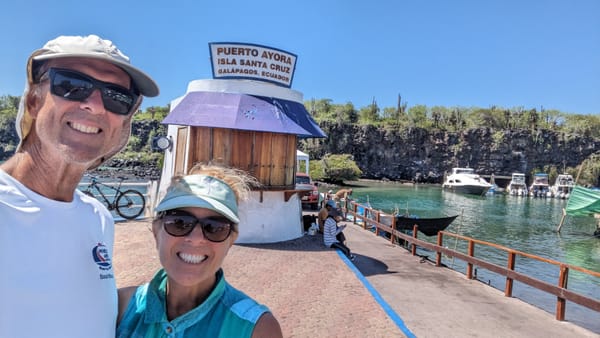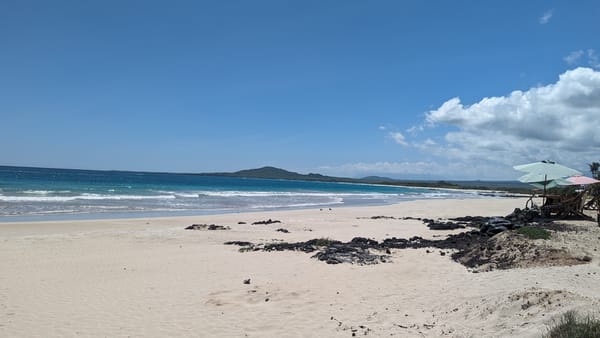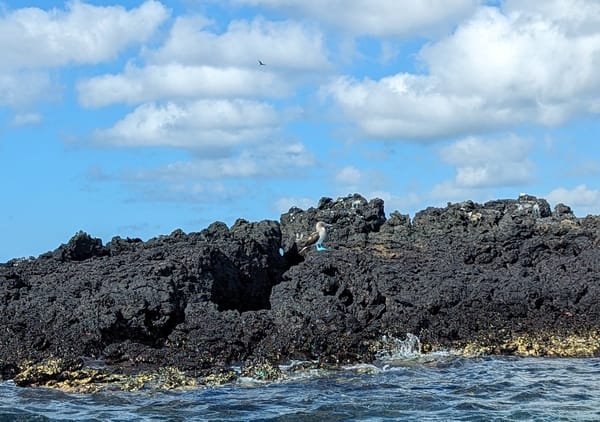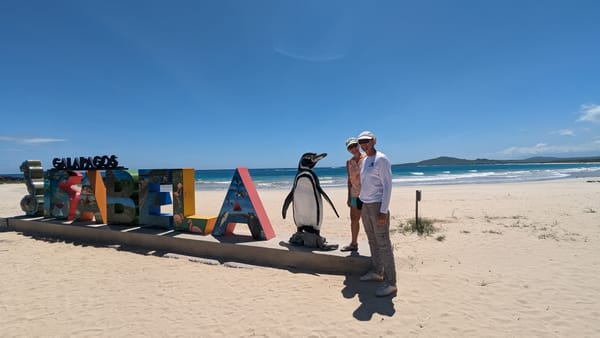The Embera Tribe of Panama

February 7, 2024 Wednesday
Happy Birthday, Captain! A trip to visit the Embera Indian tribe…what an unusual way to celebrate!
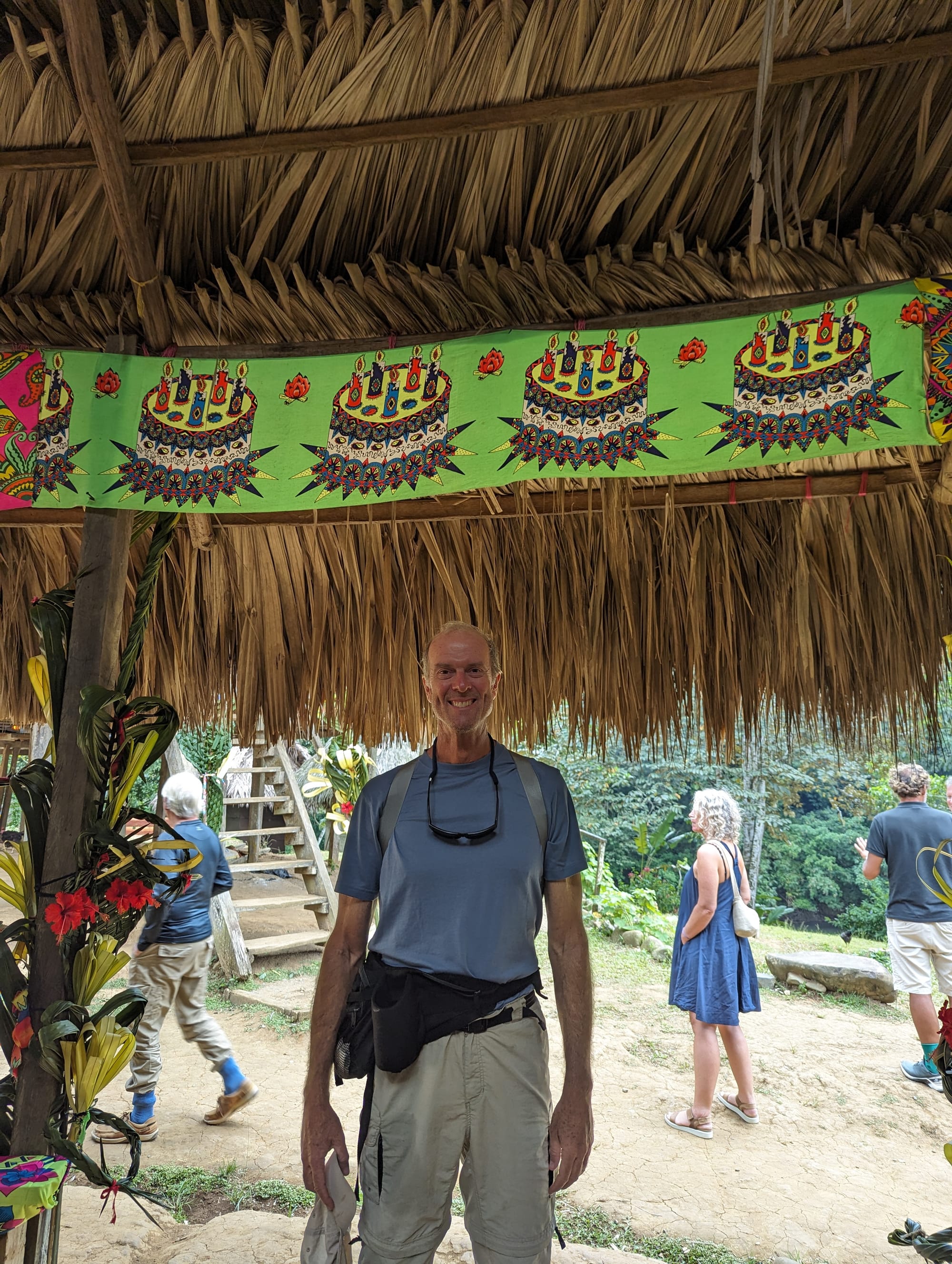
An early bus ride took us through the interior of the country. We were dropped off at a point along the Chagres River (the river that was dammed to create Gatun Lake for the locks of the Canal). Waiting for us were six dark-skinned men wearing brightly colored, long and loose-fitting loin cloths, as well as three dug-out canoes, each about 15 feet long and kitted with a 25 hp outboard (authenticity only goes so far!)
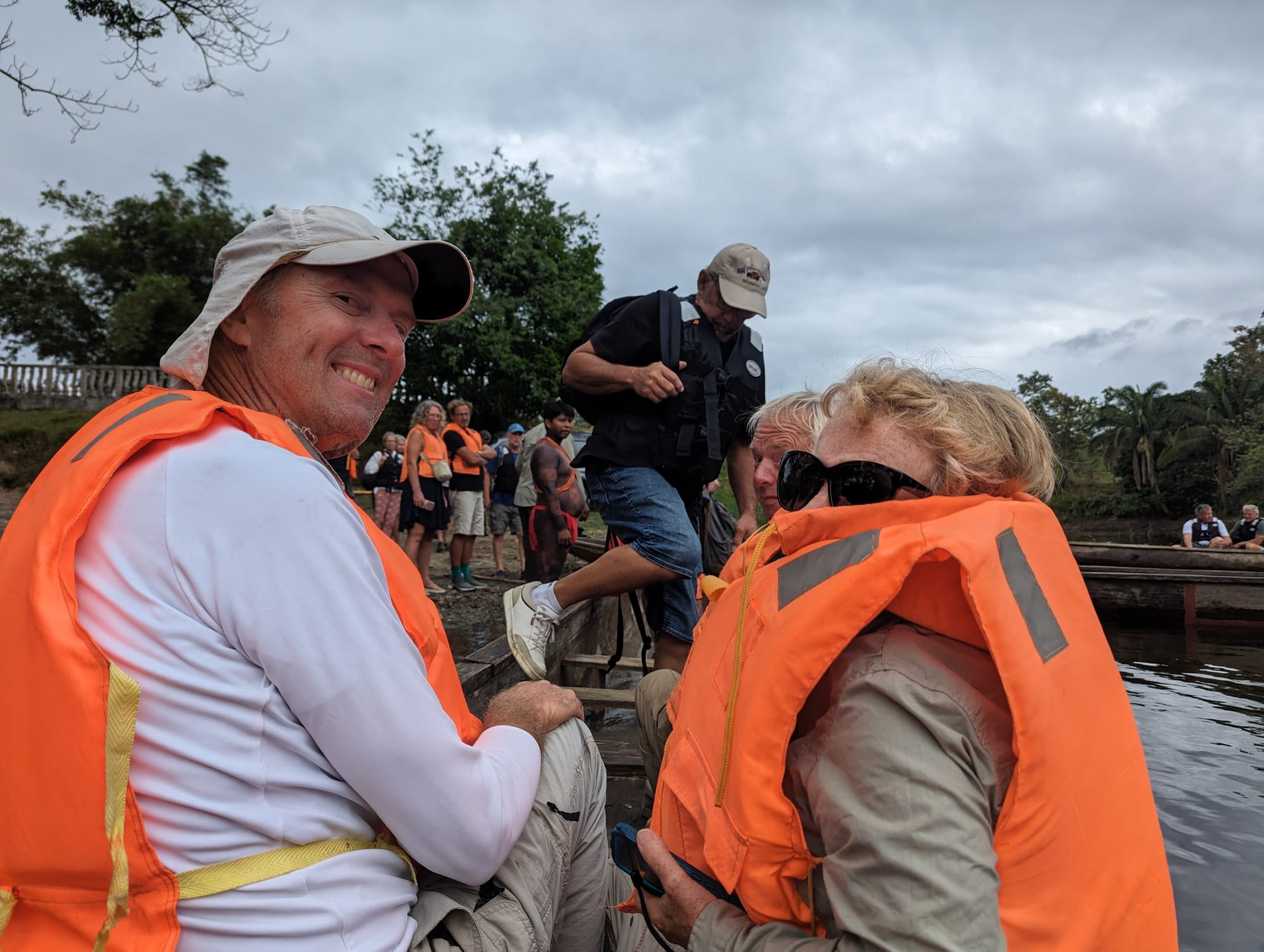
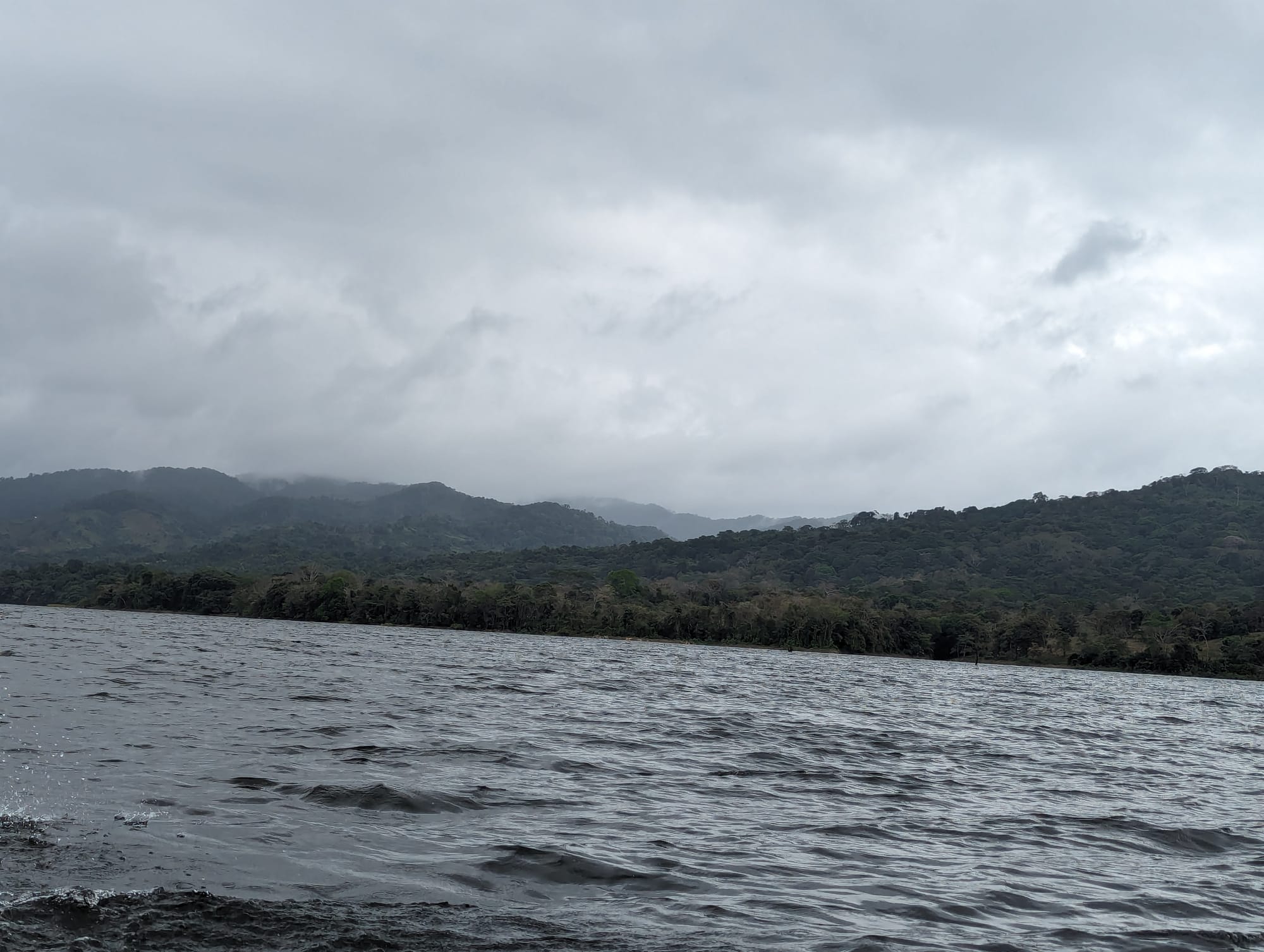
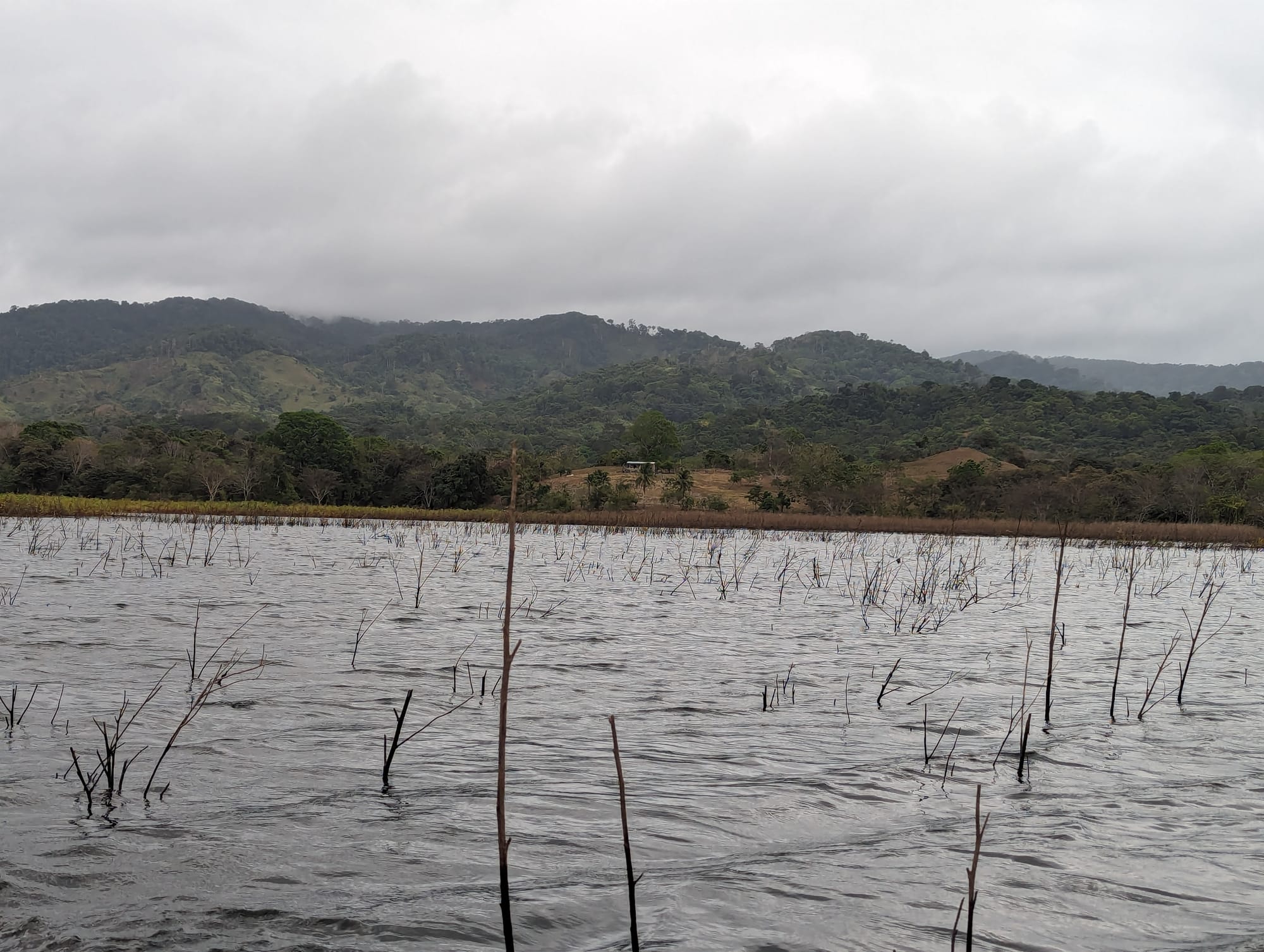
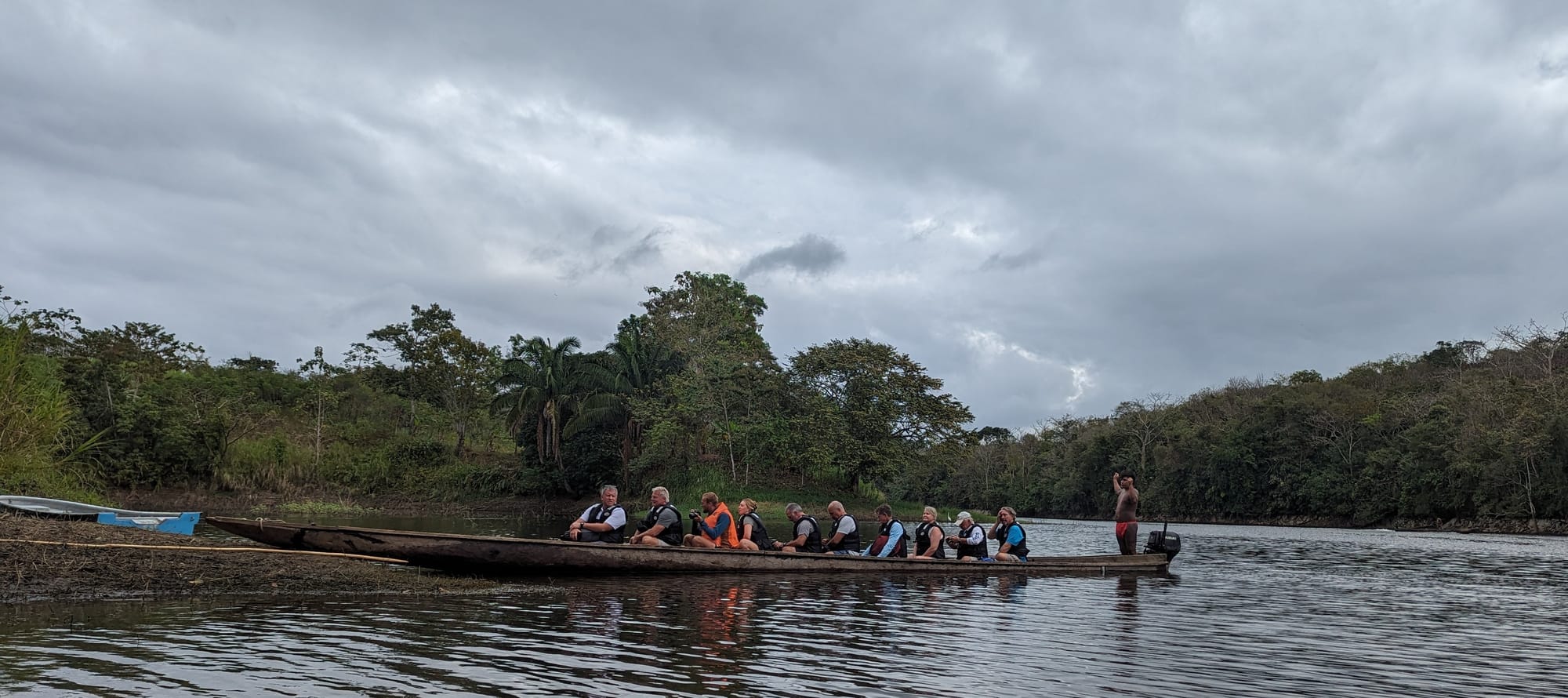
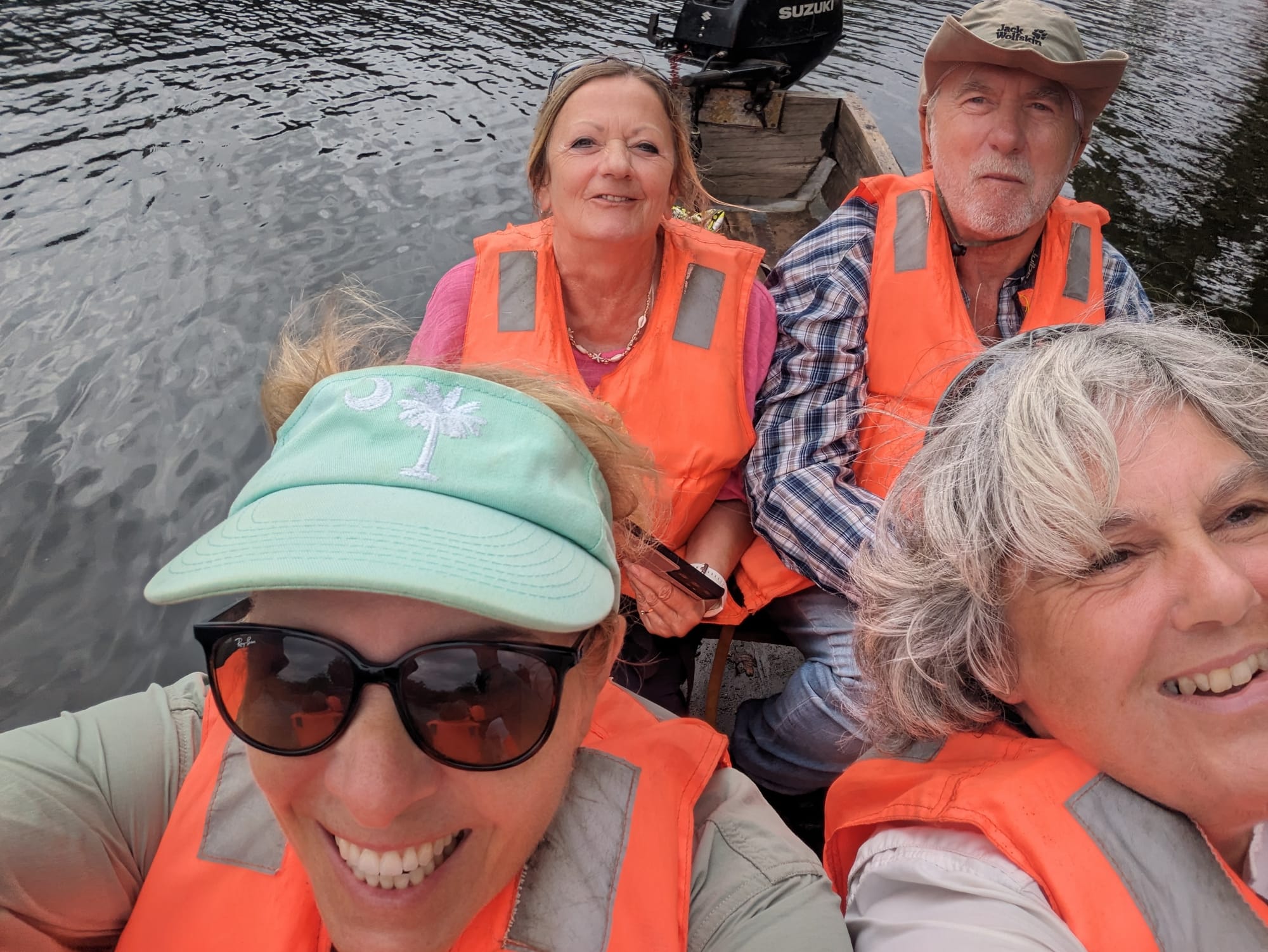
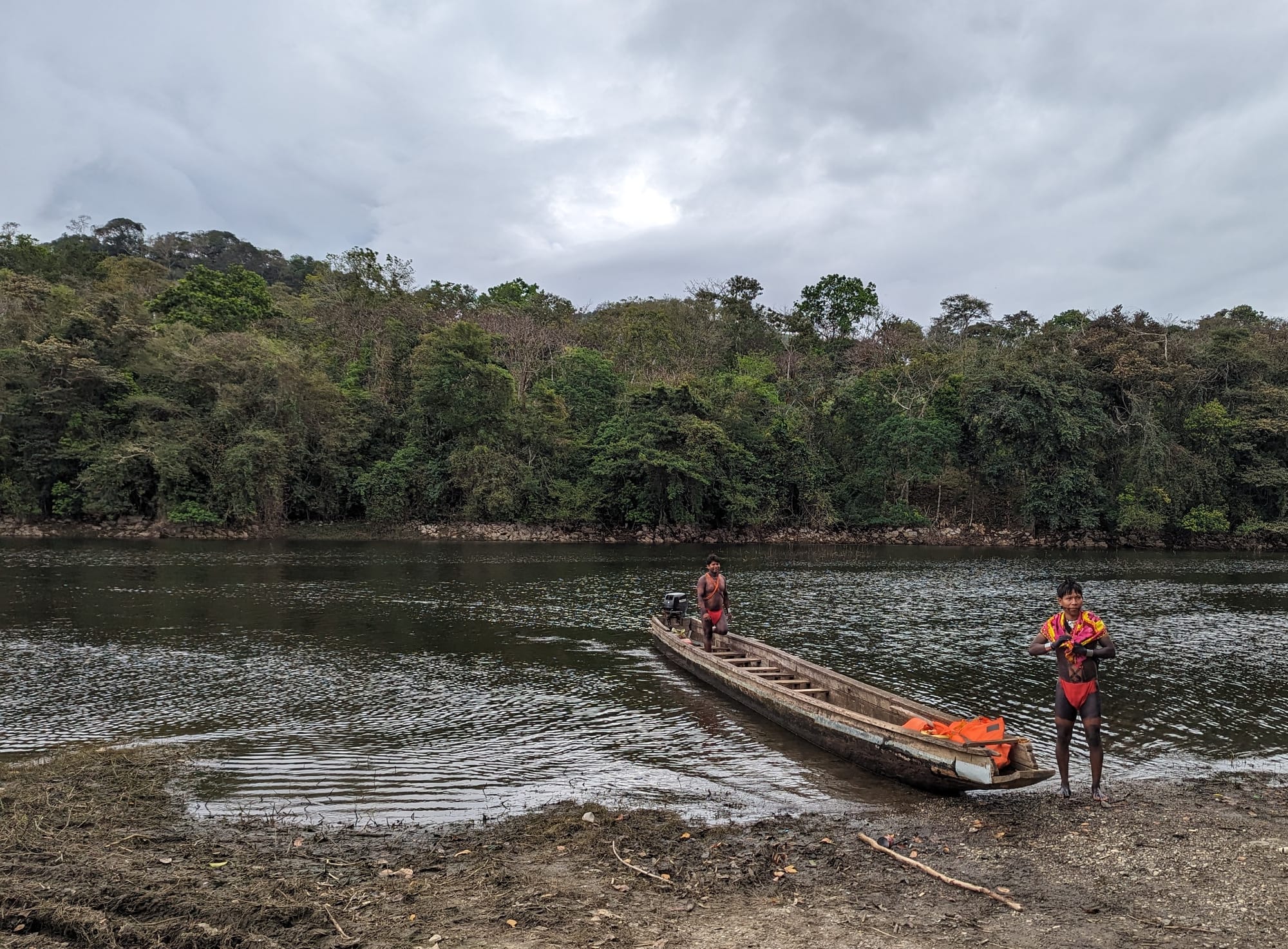
Along the Charges River with W-ARC friends
We were in the canoes for about 30 minutes as we motored through beautiful parkland. Only the Embera Indians are permitted to live here. There was an abundance of birdlife to observe…egrets herons, kingfishers. The river cut through green rolling hills with narrow stretches of tall trees, their branches reaching over the water, and wider sections that were shallow and filled with reeds. Other parts were so shallow and rocky, that had our guides not known exactly where to steer, we would have gotten stuck!
All too soon we disembarked onto a rocky shore and were greeted by the sounds of drums and singing. Along the bank were the men, women and children of the Embera tribe in full traditional dress. It was like going back in time! My first impression of the people was that they were of African descent because their skin was so dark. We were soon to learn that they are dark because they are tattooed from head to toe (painted on ink, no needles!). Some villagers were completely dark, while others sported elaborate designs of the wearer’s choice. Not only decorative, but the paint also serves as an insect repellent!
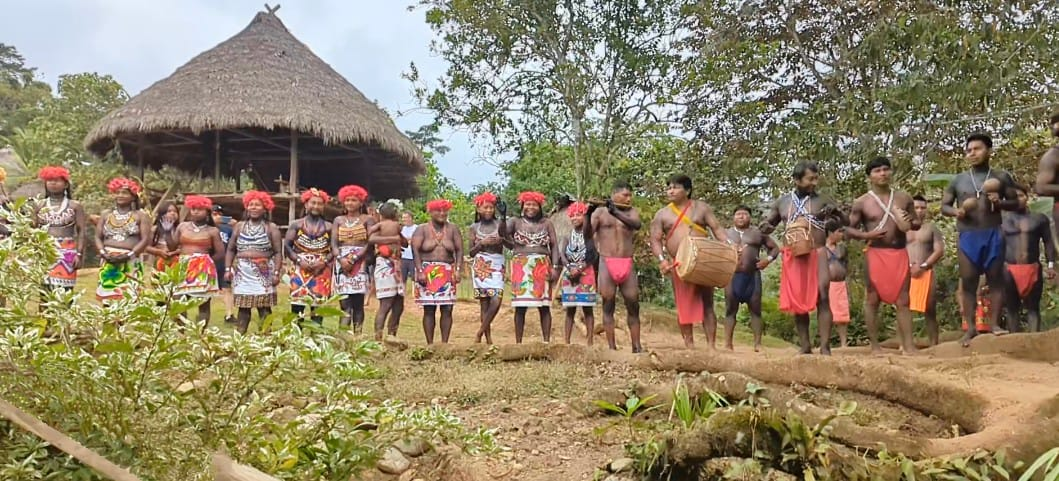
The women wore colorfully patterned wrap-around skirts and flower head-dresses. Most wore elaborately beaded tops, while others wore nothing on top but their tattoos. The little girls dressed like their mothers, while the boys wore the simple loin cloth like their dads. The people were small-statured, but heavy set. They were a very handsome group, though we noticed that most of them rarely smiled.
We were led from the bank to a very large, open thatched hut which boasted an intricately woven roof constructed of reeds. The chief’s representative welcomed us in the native tongue of the Embera. He then proudly spoke of Embera history and culture in Spanish, which was translated by our guide Clemente. “Ba-bu’-e” means “thank you” in Embera, and we used it many times to express our appreciation for their hospitality.
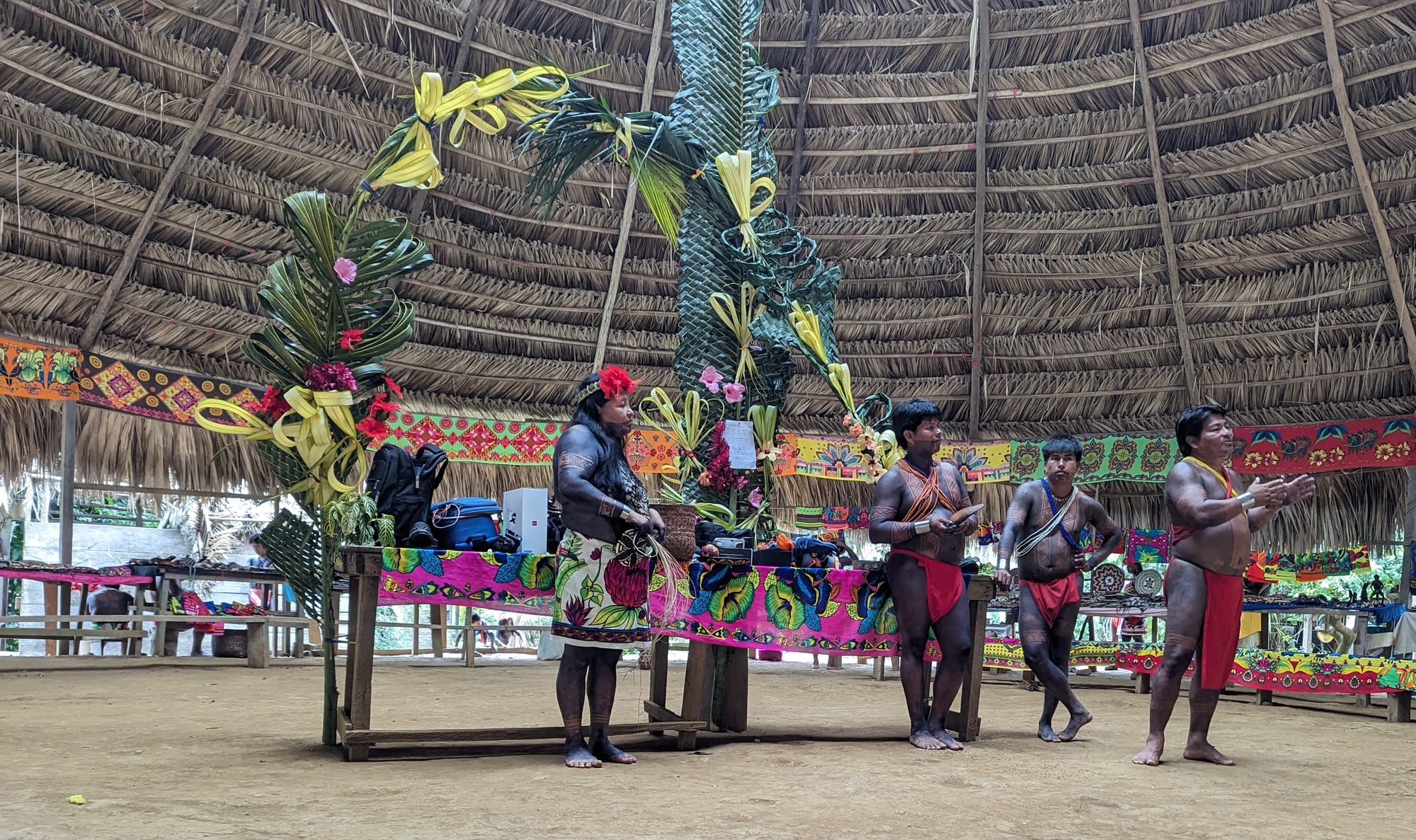
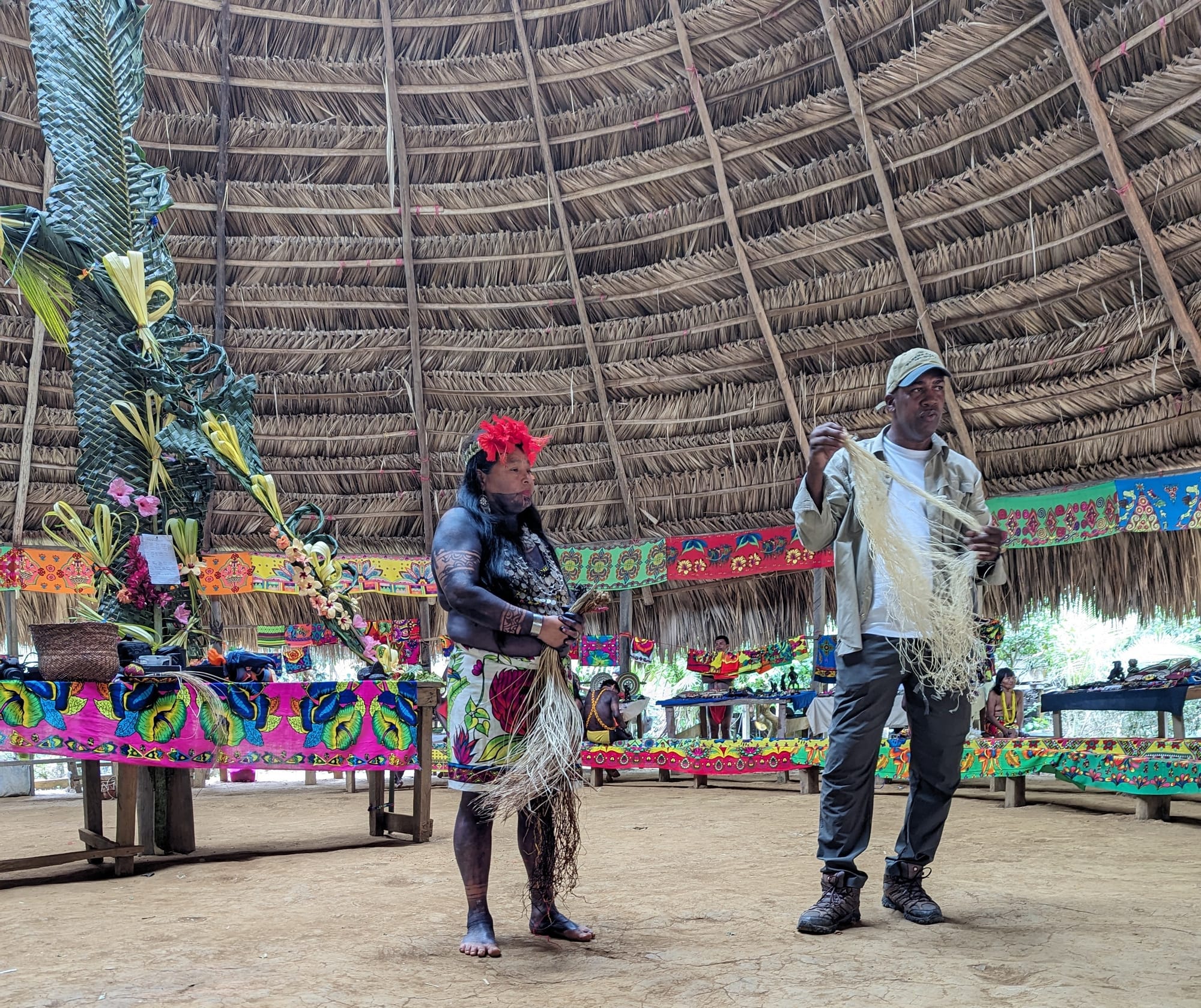
Embera history and culture talk
After the talk we were served an excellent lunch of fired tilapia and fried plantain slices served in a bowl made of a wrapped banana leaf. A huge assortment of sliced watermelon, cantaloupe, pineapple, papaya, and star fruit was offered for dessert.
The kitchen where all this food had been prepared was on the raised floor of a nearby hut. To get there required climbing 15 steps (that had been hewn along one side of a log) to the plank floor. At the end was an area with hot charcoals and large metal pots (like woks) that were holding hot oil. Hard work, but the results were very tasty!
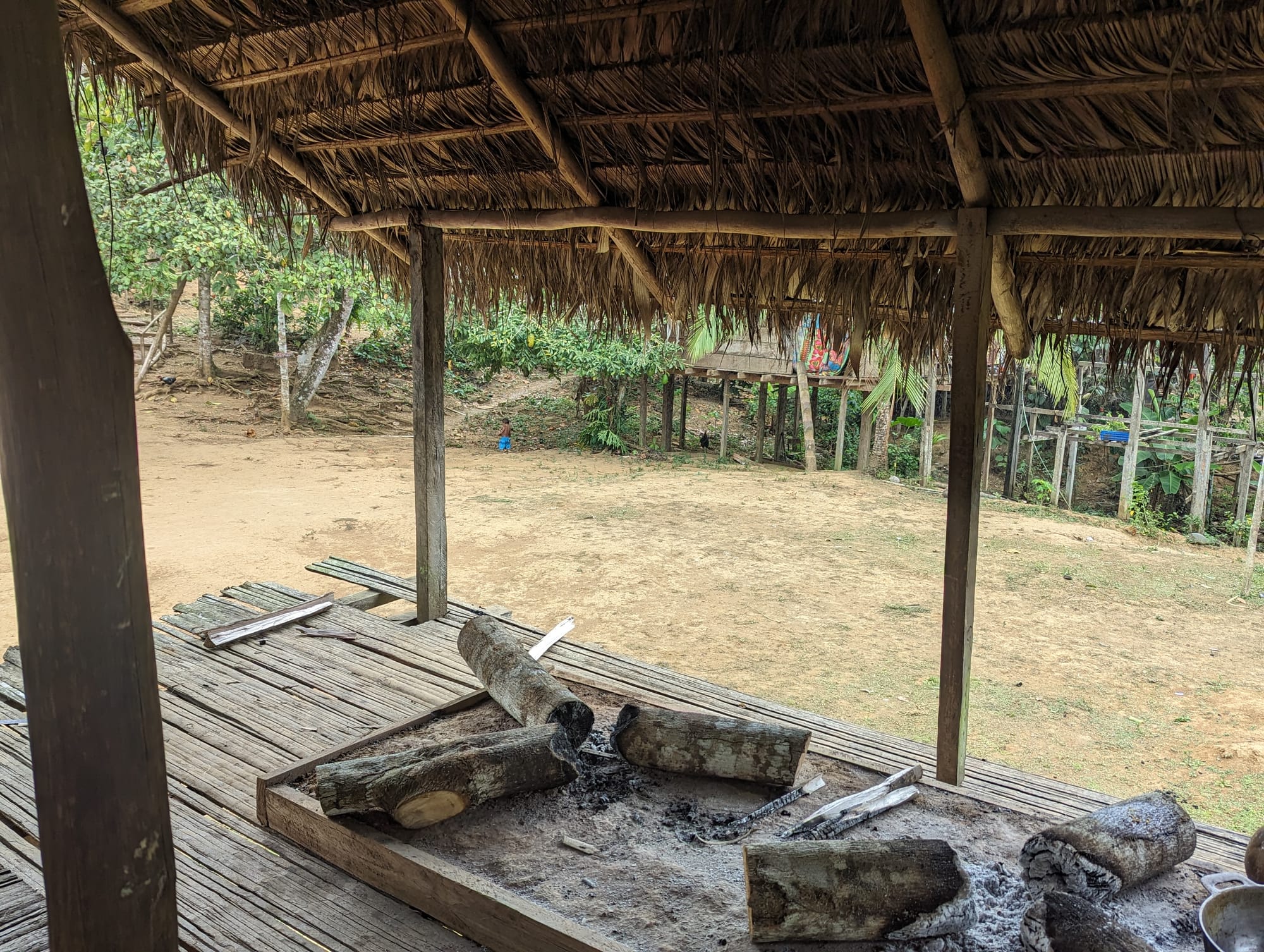
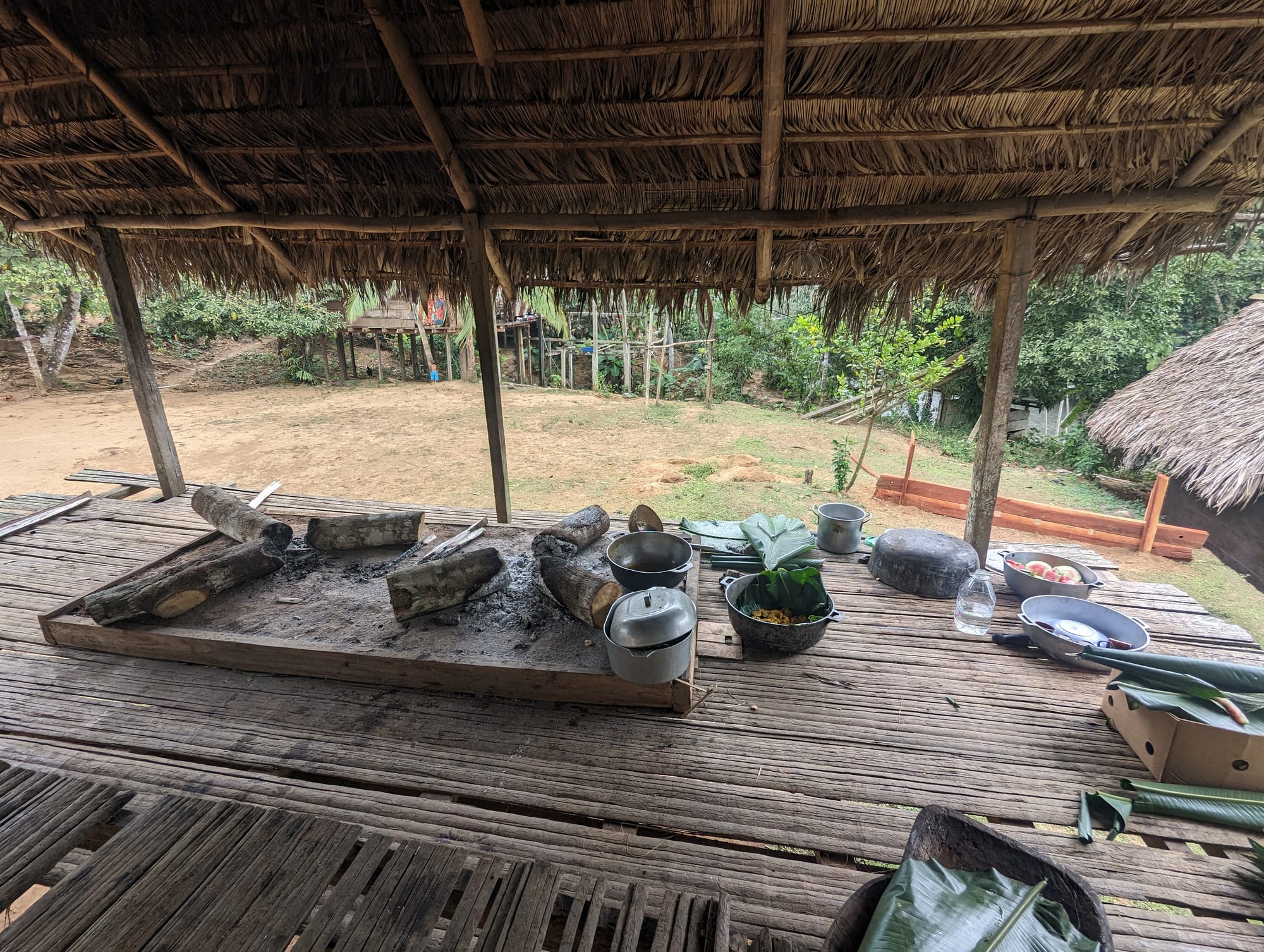
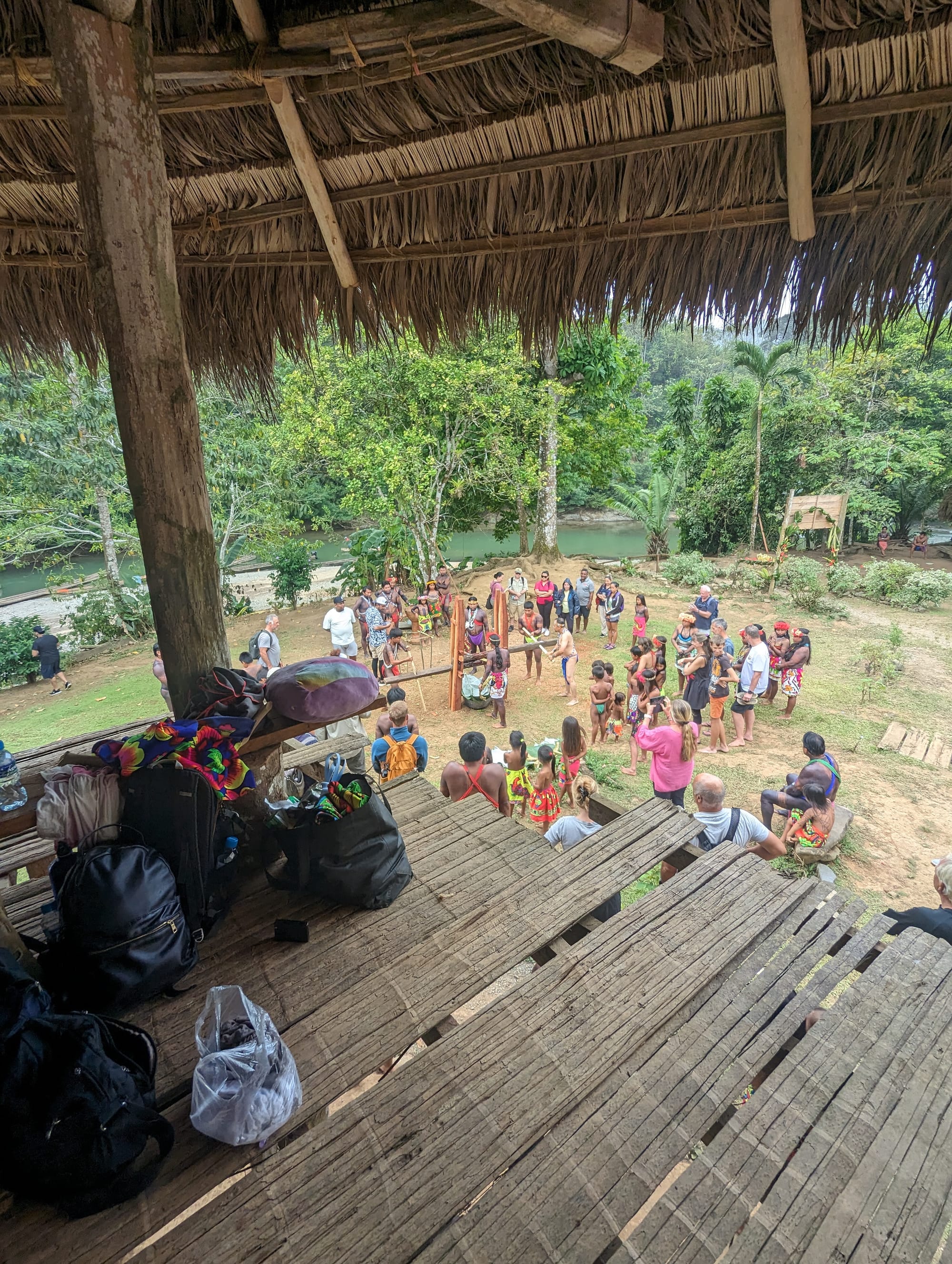
View from the kitchen
After lunch we were treated to a walk through the jungle surrounding the village. Along the way we saw that the people lived in huts on stilts with thatched roofs, and with those “log steps”. Small children were happily chasing chickens around; the older ones were a bit shy, but friendly.
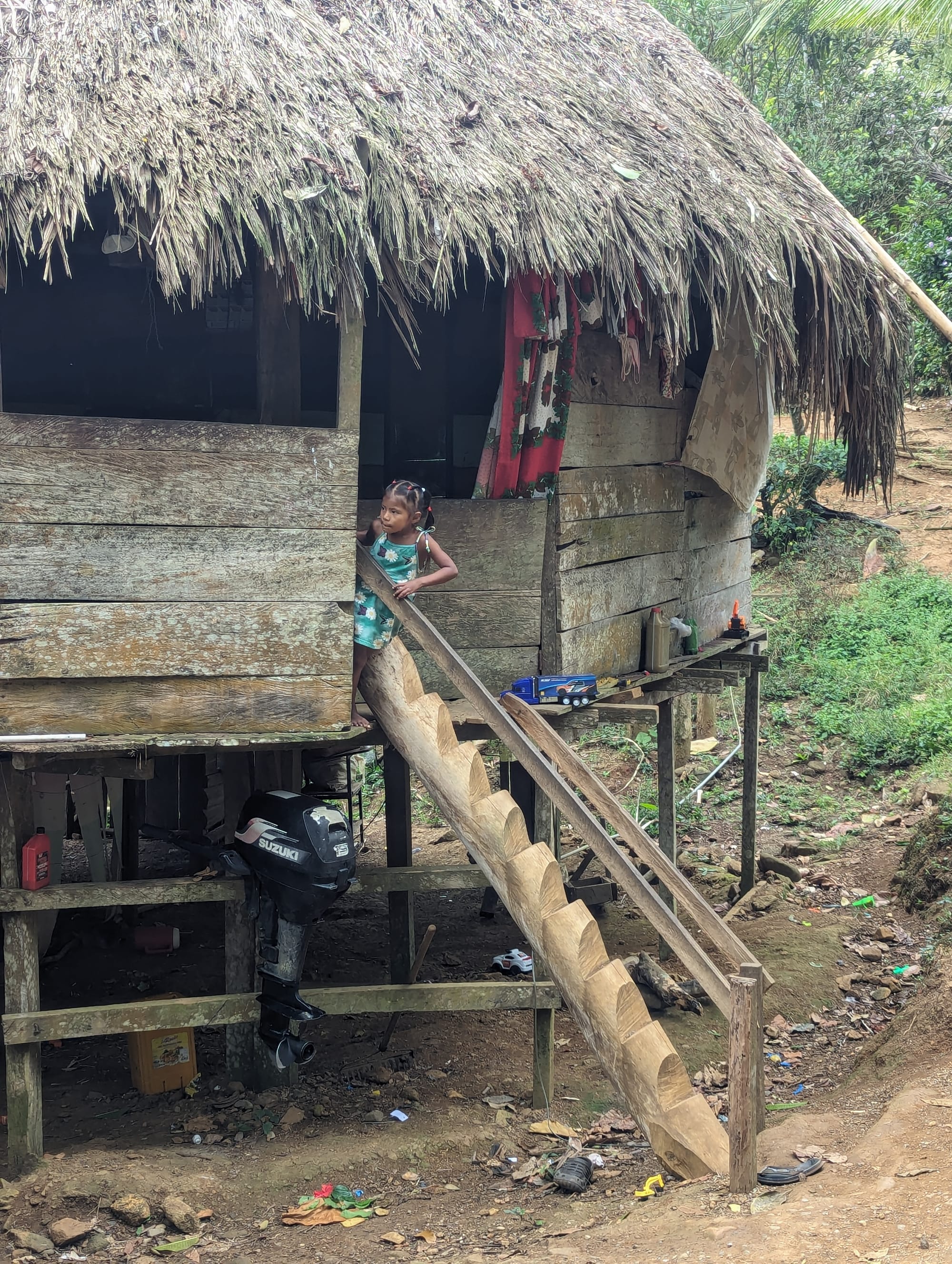
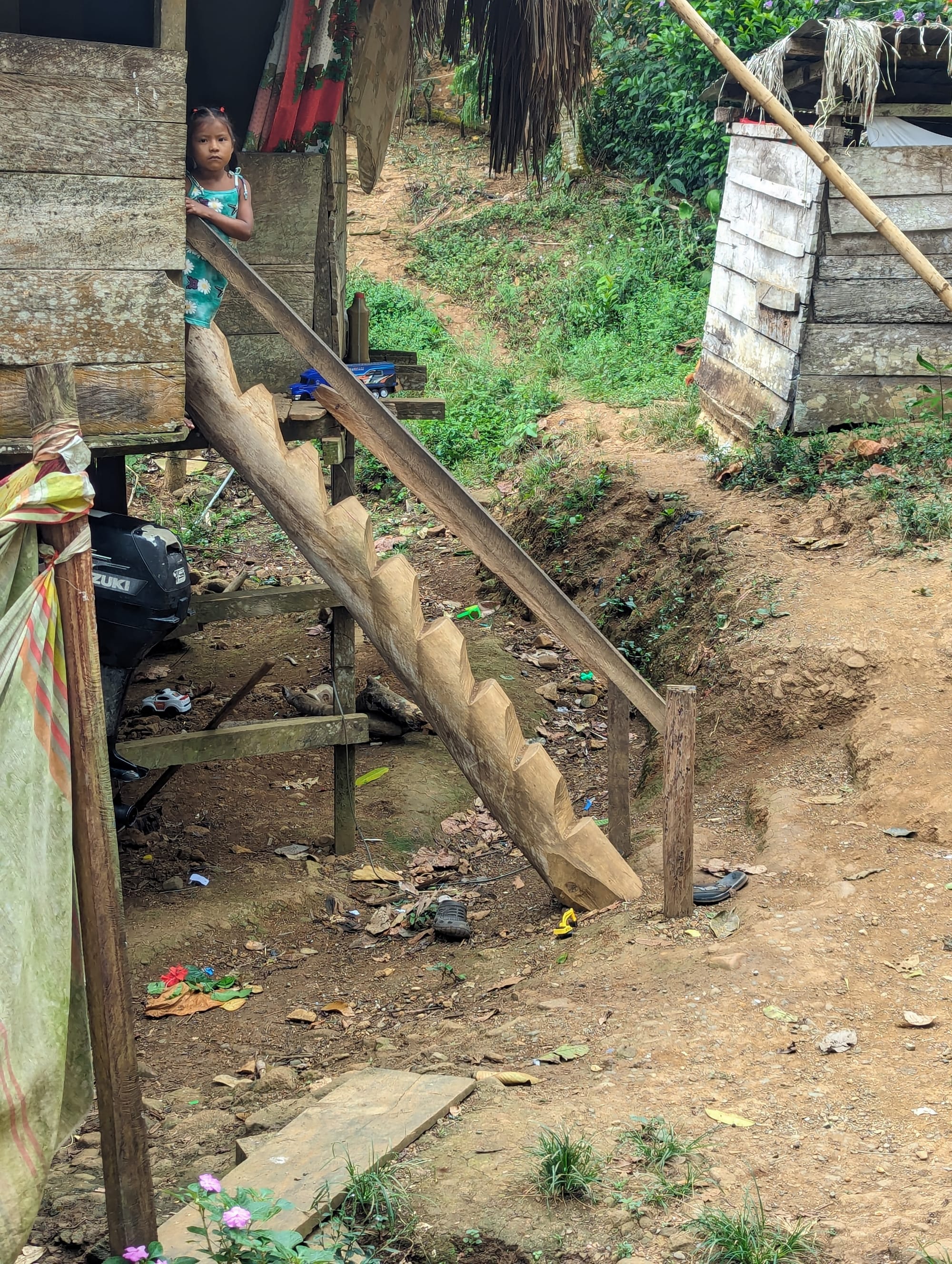
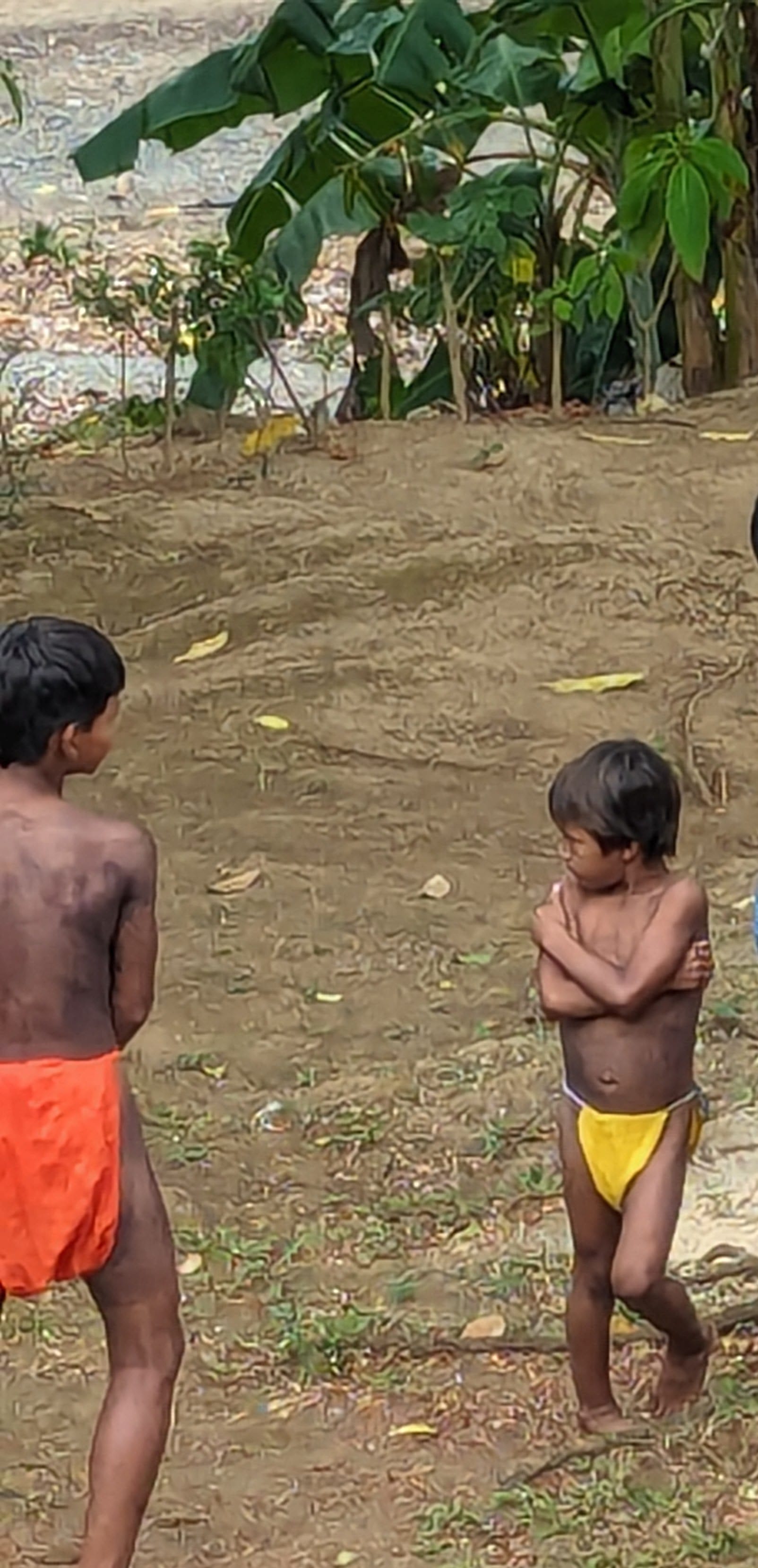
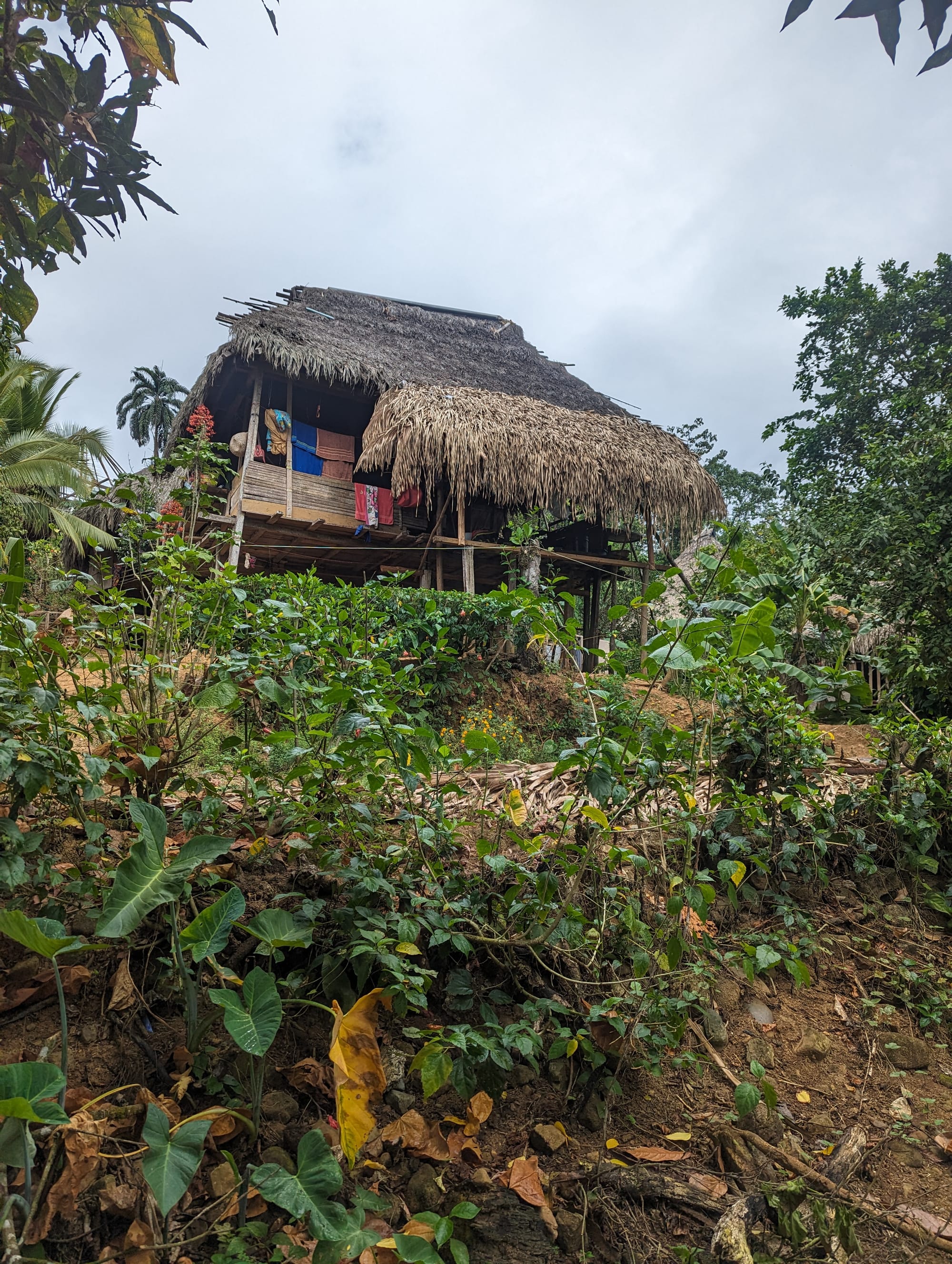

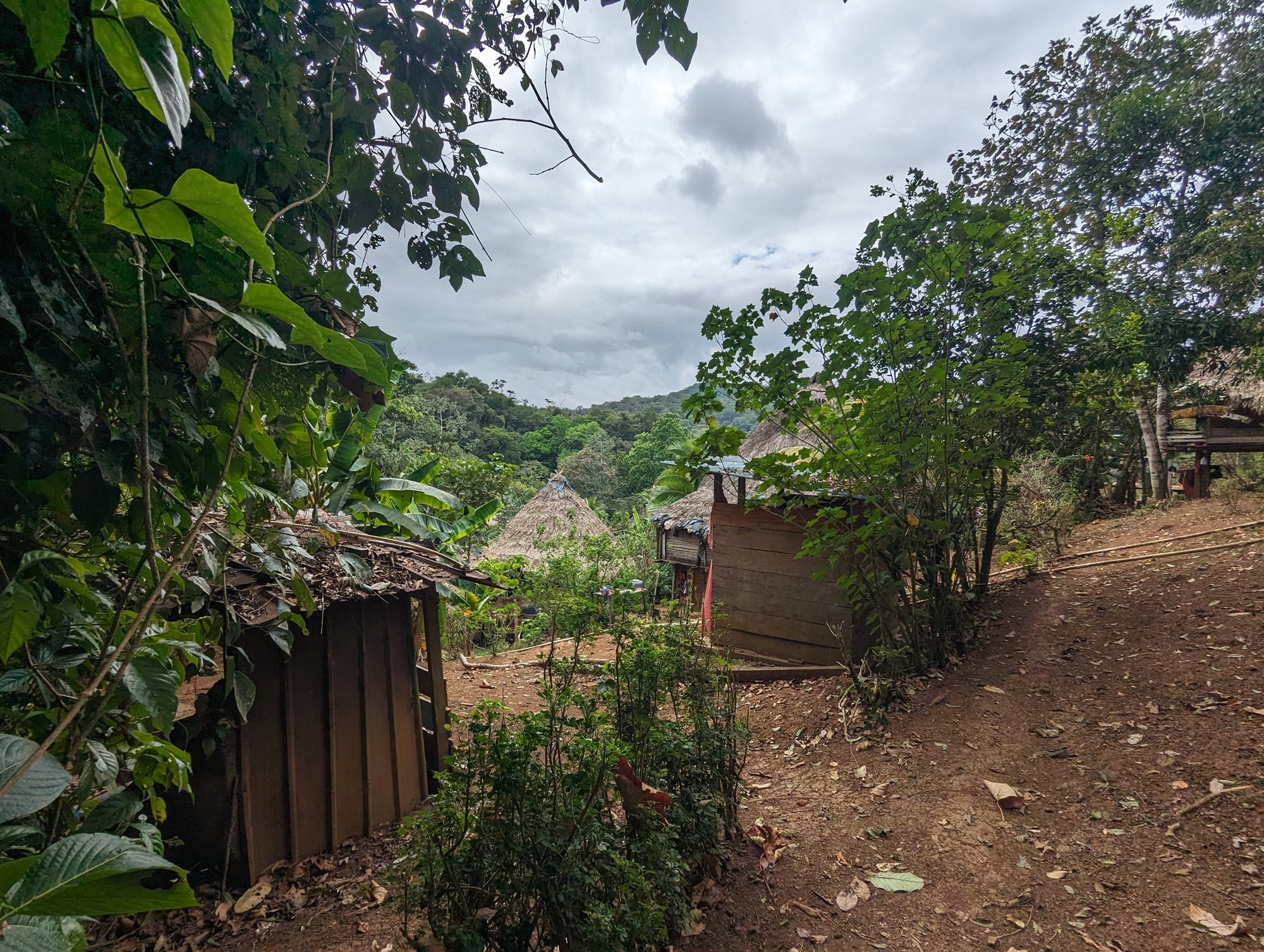
Our guide, the village medicine man, pointed out several types of plants and described their medicinal purposes. Samples of one root used for dental pain was passed around the group. Sure enough, after a few chews, everyone’s tongue was numb! And, of course, we were shown the “Viagra tree”, though much to the disappointment to some of the male members of our group, no samples were offered! 😊
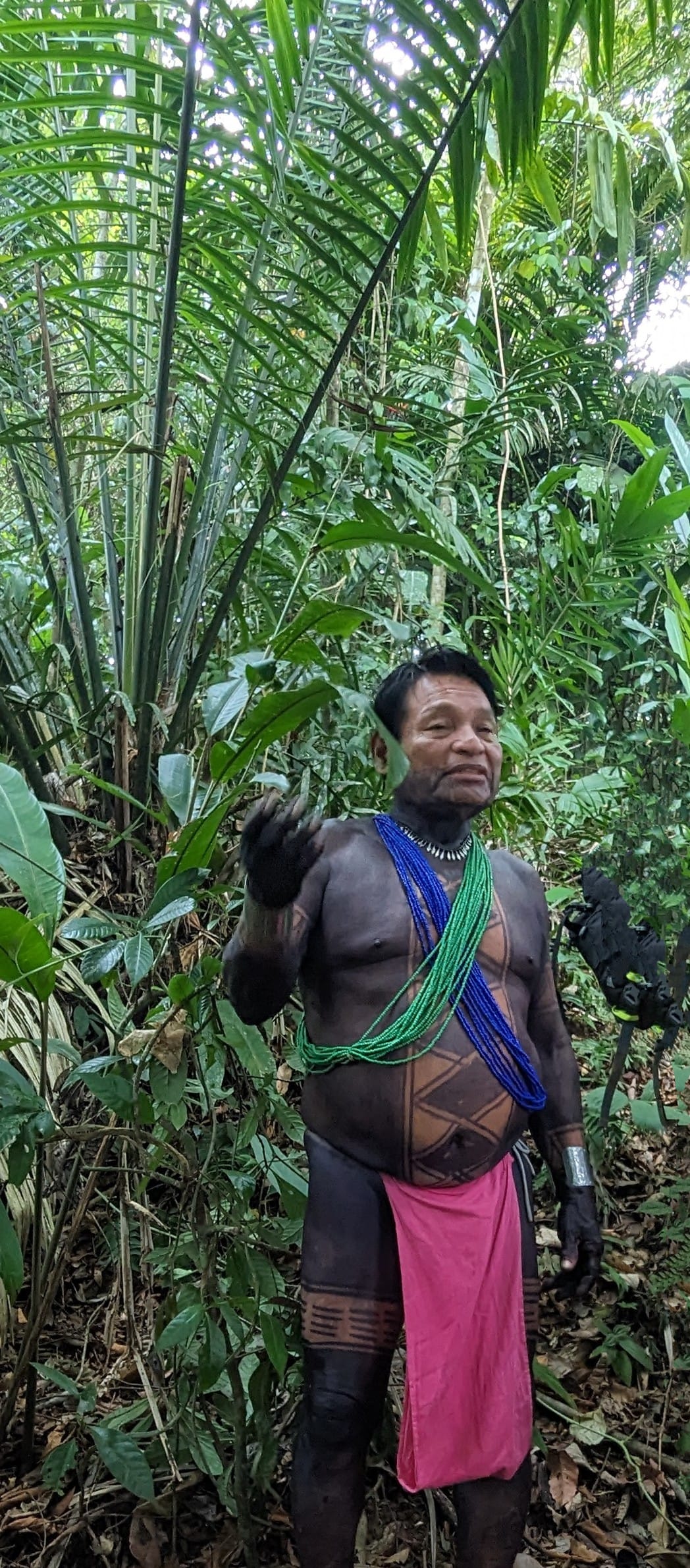
The village school was a small building with two classrooms. Children here are educated through the sixth grade. To continue a child’s education beyond that requires that the parents pay for it. Three teachers come every week and stay in a small cinder-block house next to the school building for three days. Two of them teach the regular curriculum, while the third teacher gives lessons about the Embera.
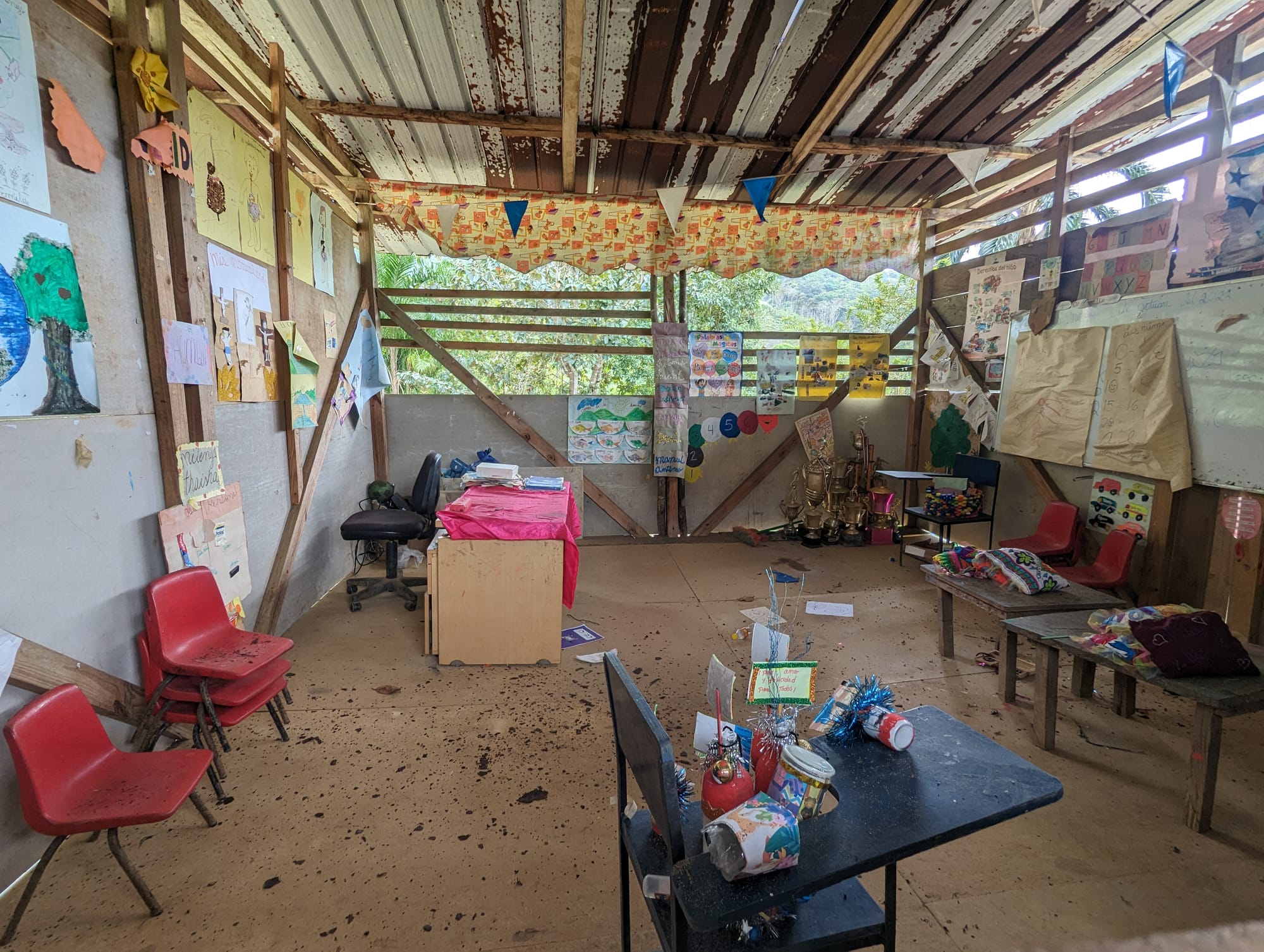
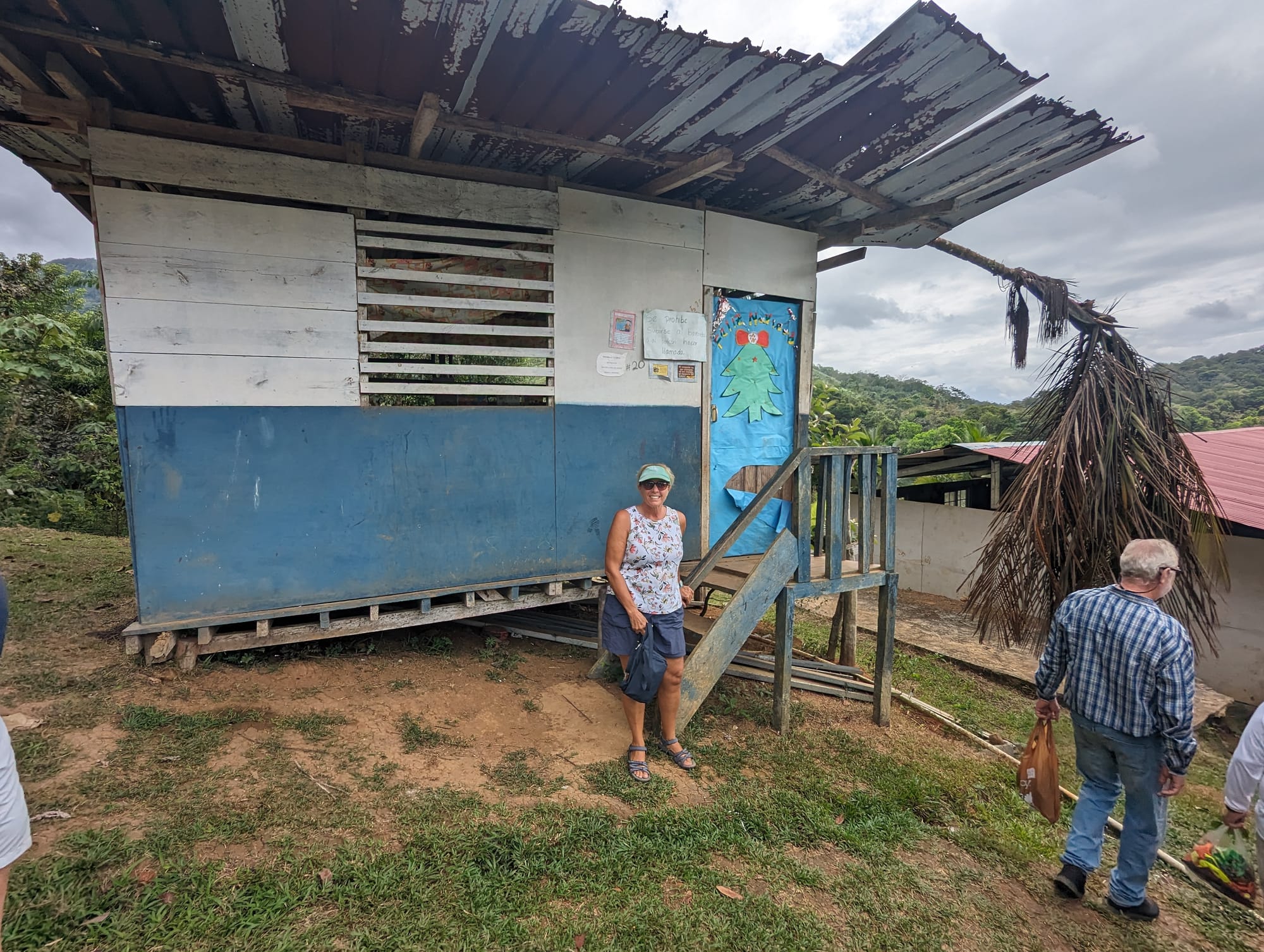
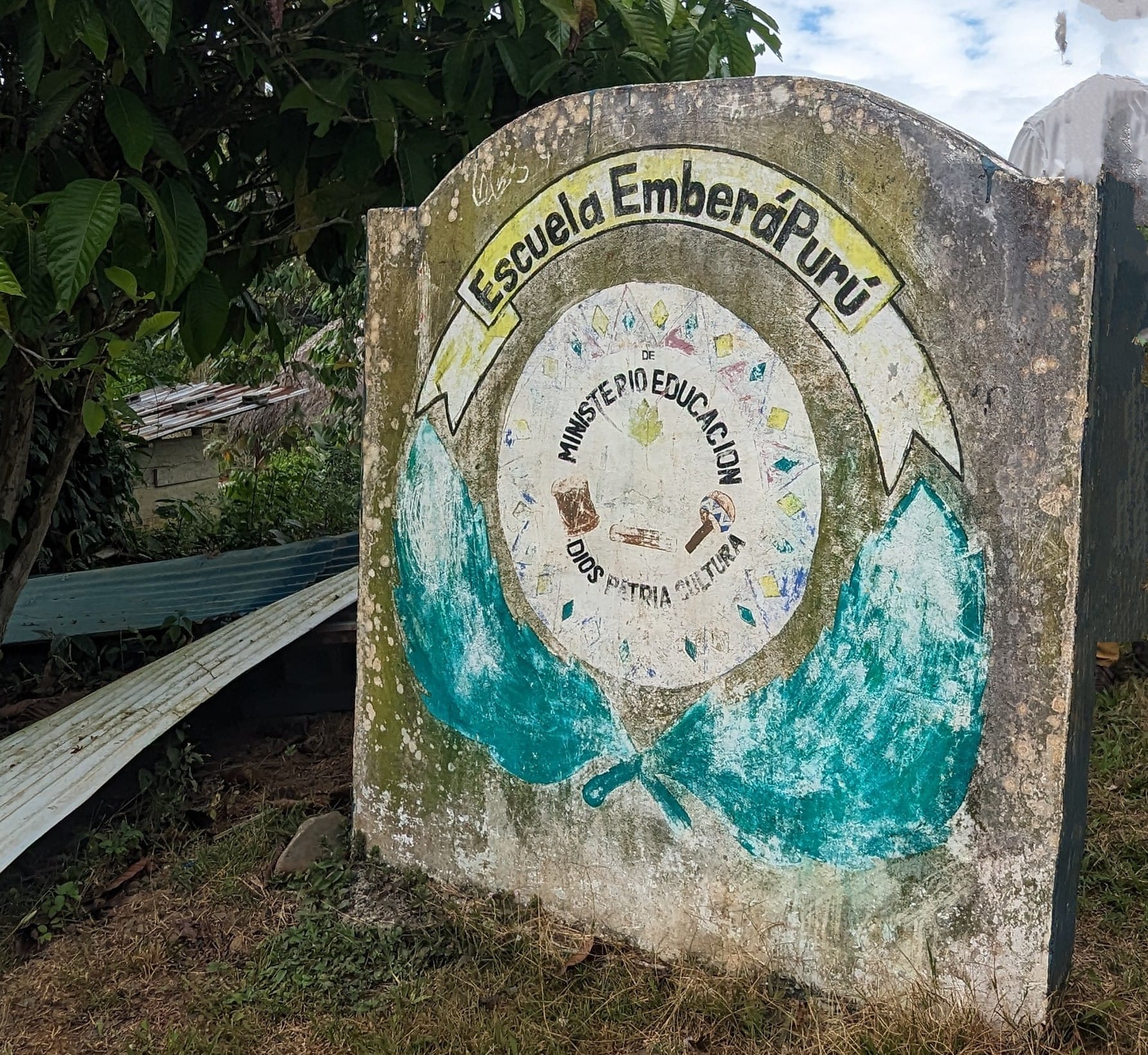
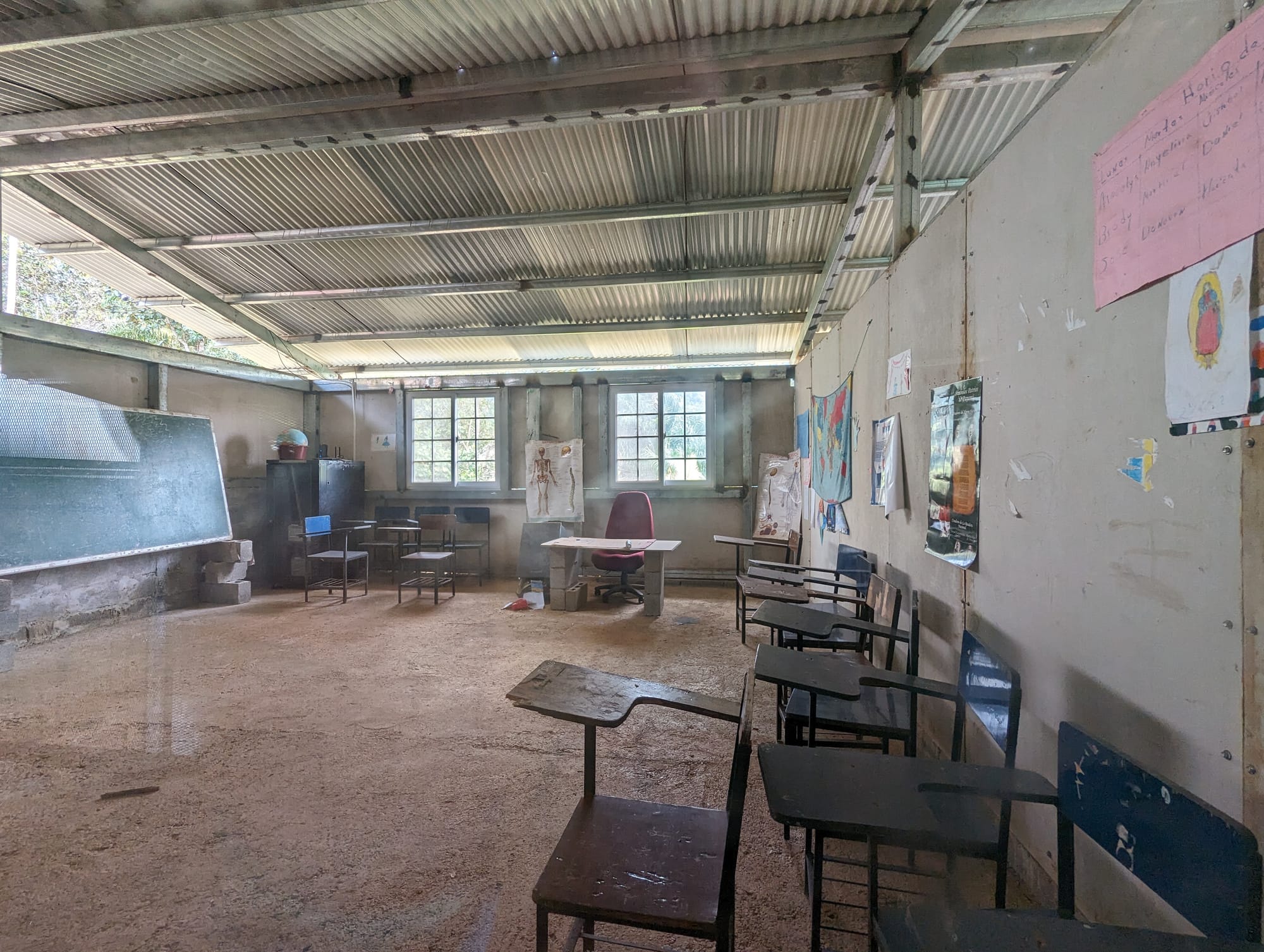
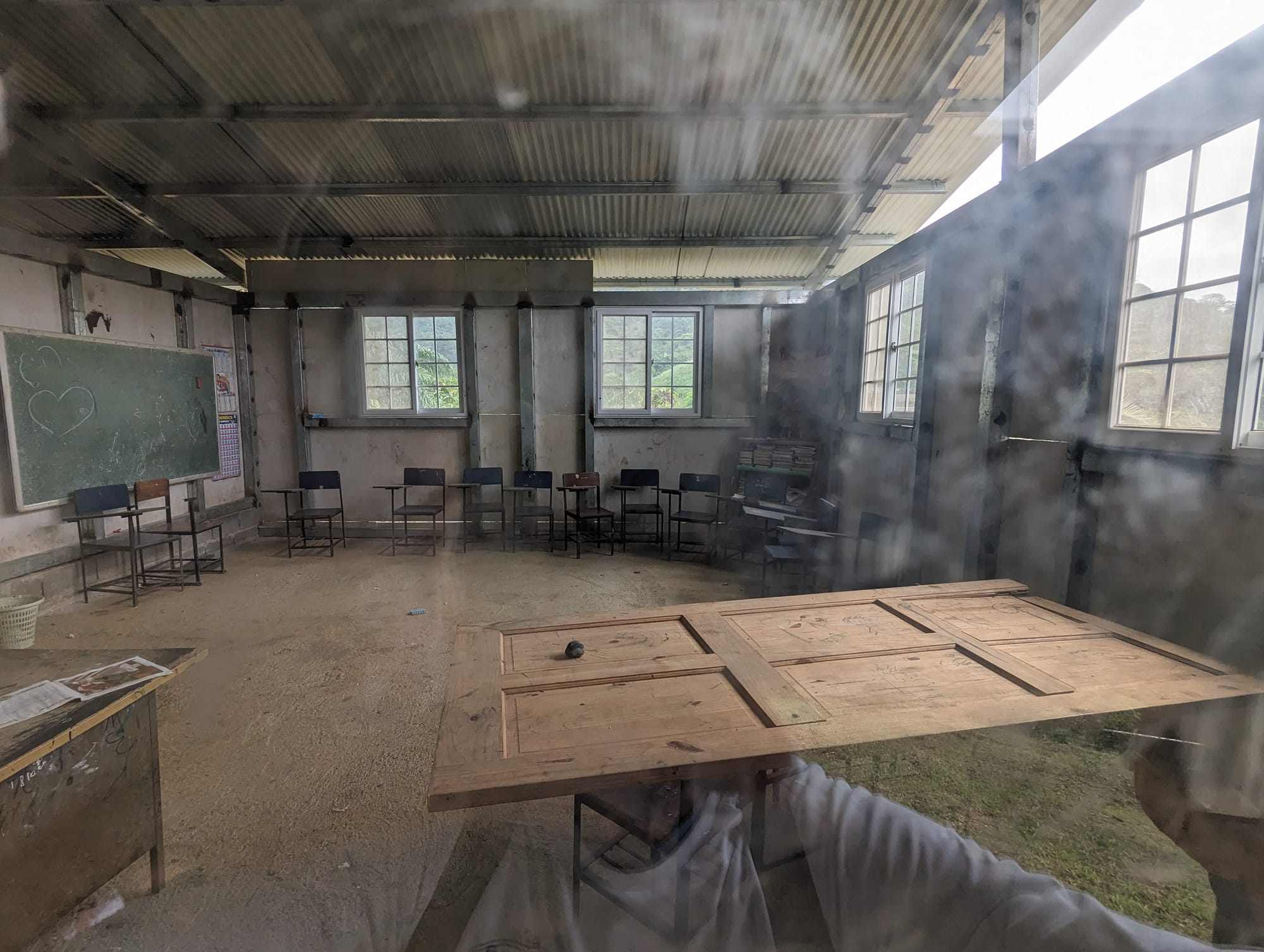
Back in the village, we were invited to browse the handmade crafts offered for sale. The community hut was ringed by tables covered with jewelry, painted fabrics and carvings. Each family had its own table of handiwork of which they were quite proud and happy to sell. In fact, it was the only time I saw any of them smile. I bought a few things, and got a tattoo on my left bicep…a temporary but fond reminder of our day!
After shopping we were treated to two traditional dances performed by the women. The Tiger Dance involved marching in a circle to the beat of a drum while three of the women acted out a hunt and a kill. Very interesting! The Monkey Dance was essentially the same, but without the hunt and kill.
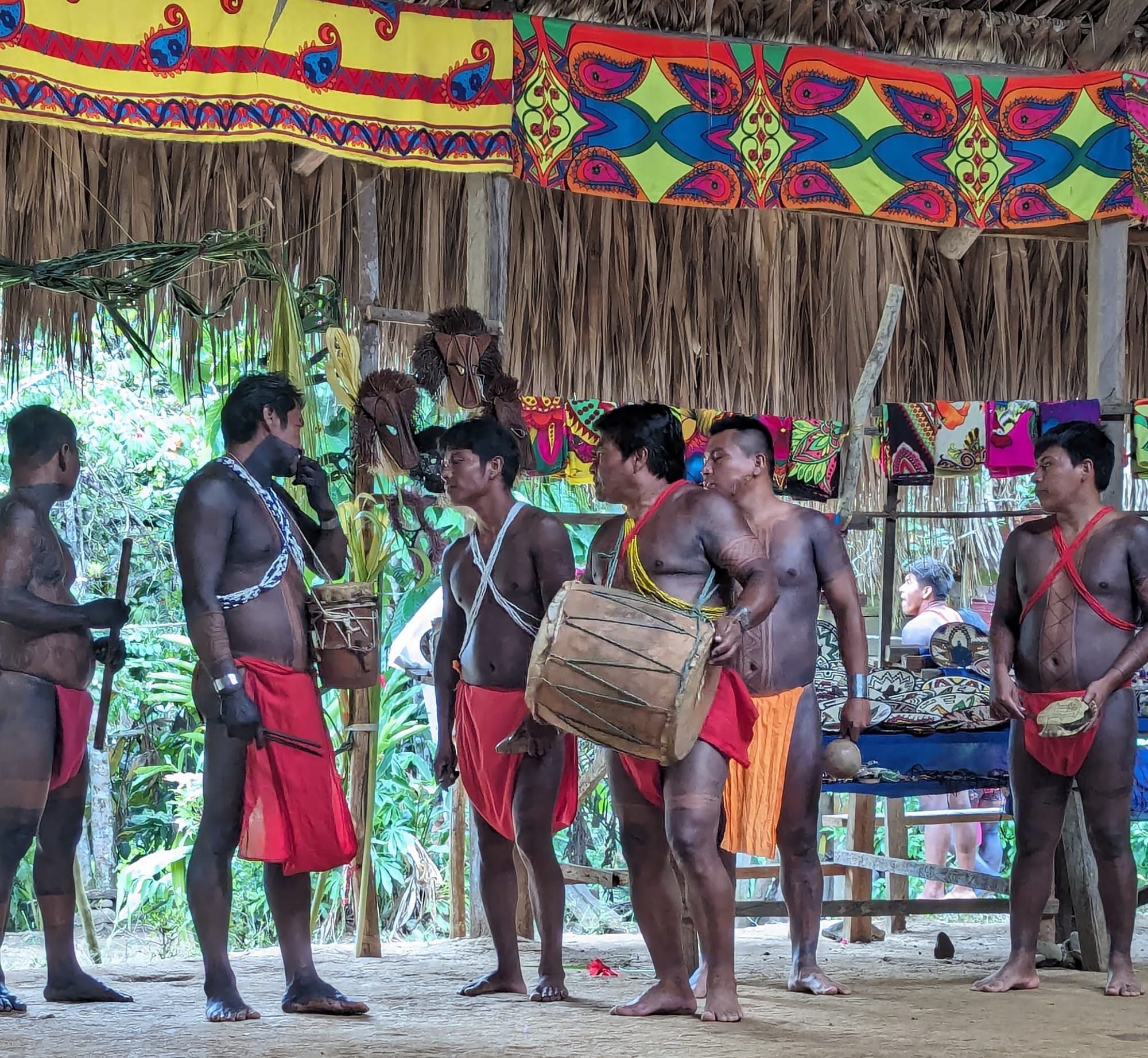
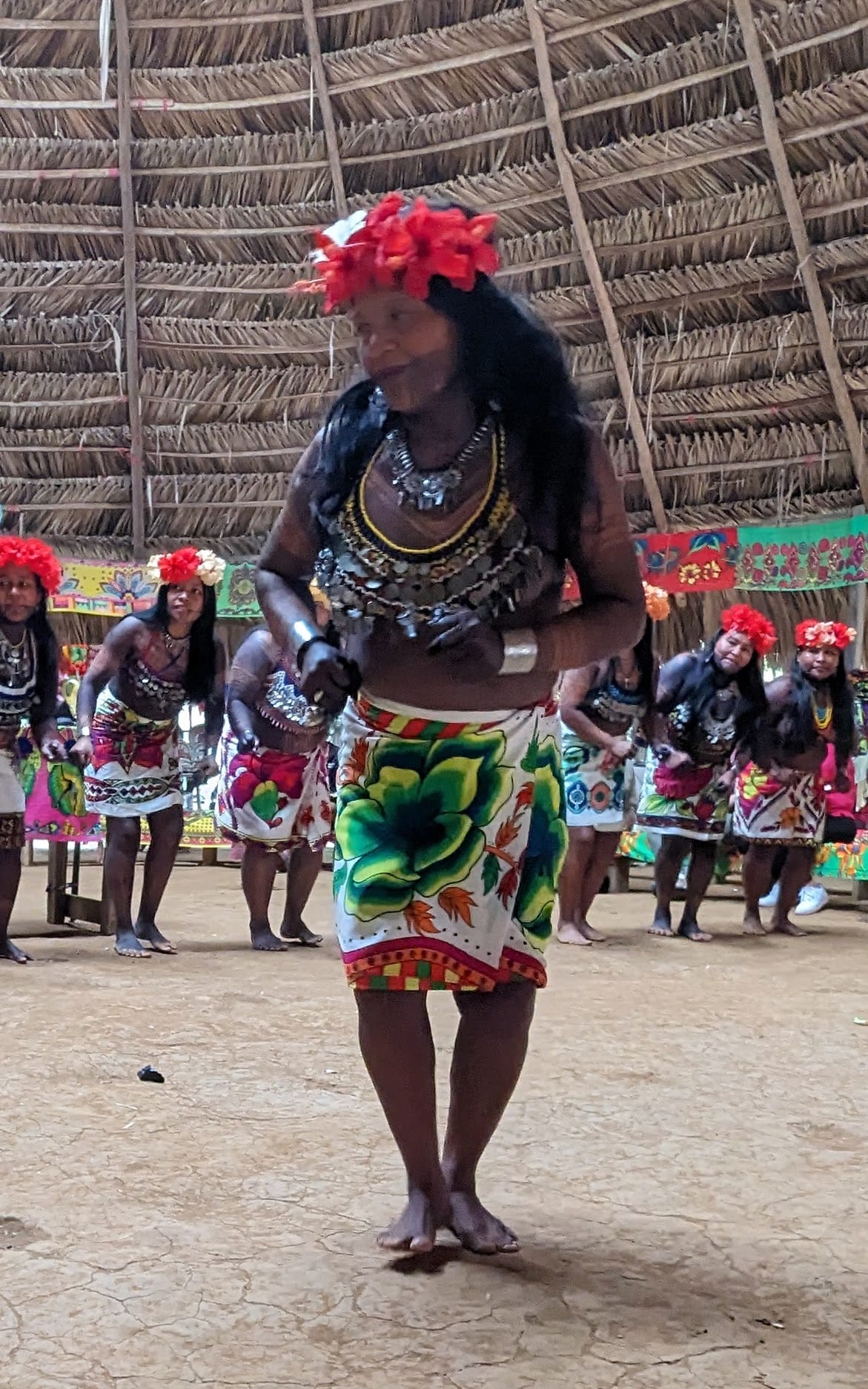
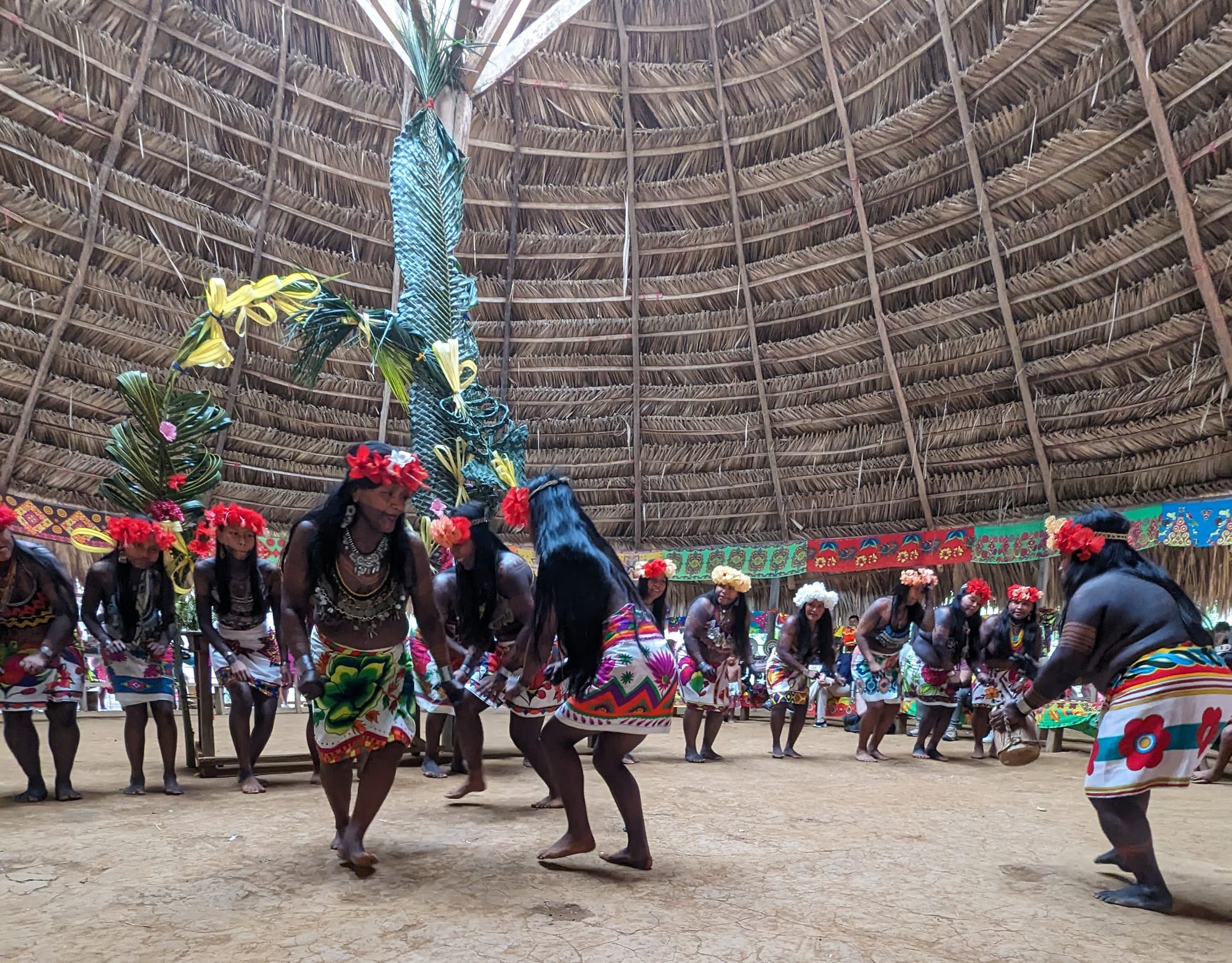
The Tiger Dance
The last dance/march included all the men, women and children of the village. After a few circles, we visitors were invited to join in. A woman grabbed Whit, and a little boy invited me. It was very entertaining!
Back in the canoes with fond farewells to the beat of the drums. The villagers were very welcoming and hospitable, but entertaining tourists is definitely their job, and they seemed very glad when the workday was done! Some things are universal 😊
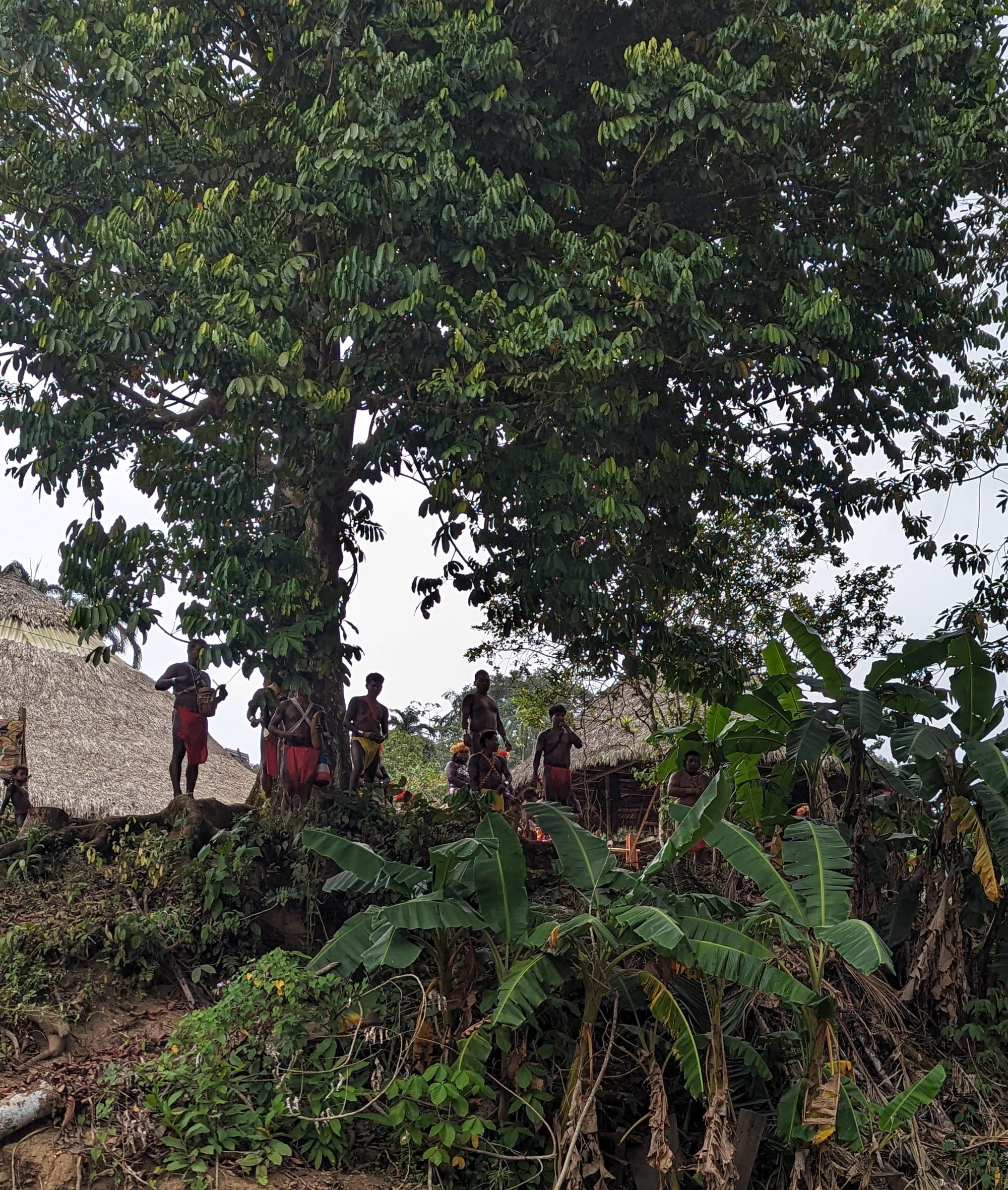
Another scenic canoe trip and bus ride back to civilization. We celebrated Whit’s birthday with a wonderful dinner (and cake – the candle was a small Roman candle!) and reflected on the amazing experience we enjoyed today.
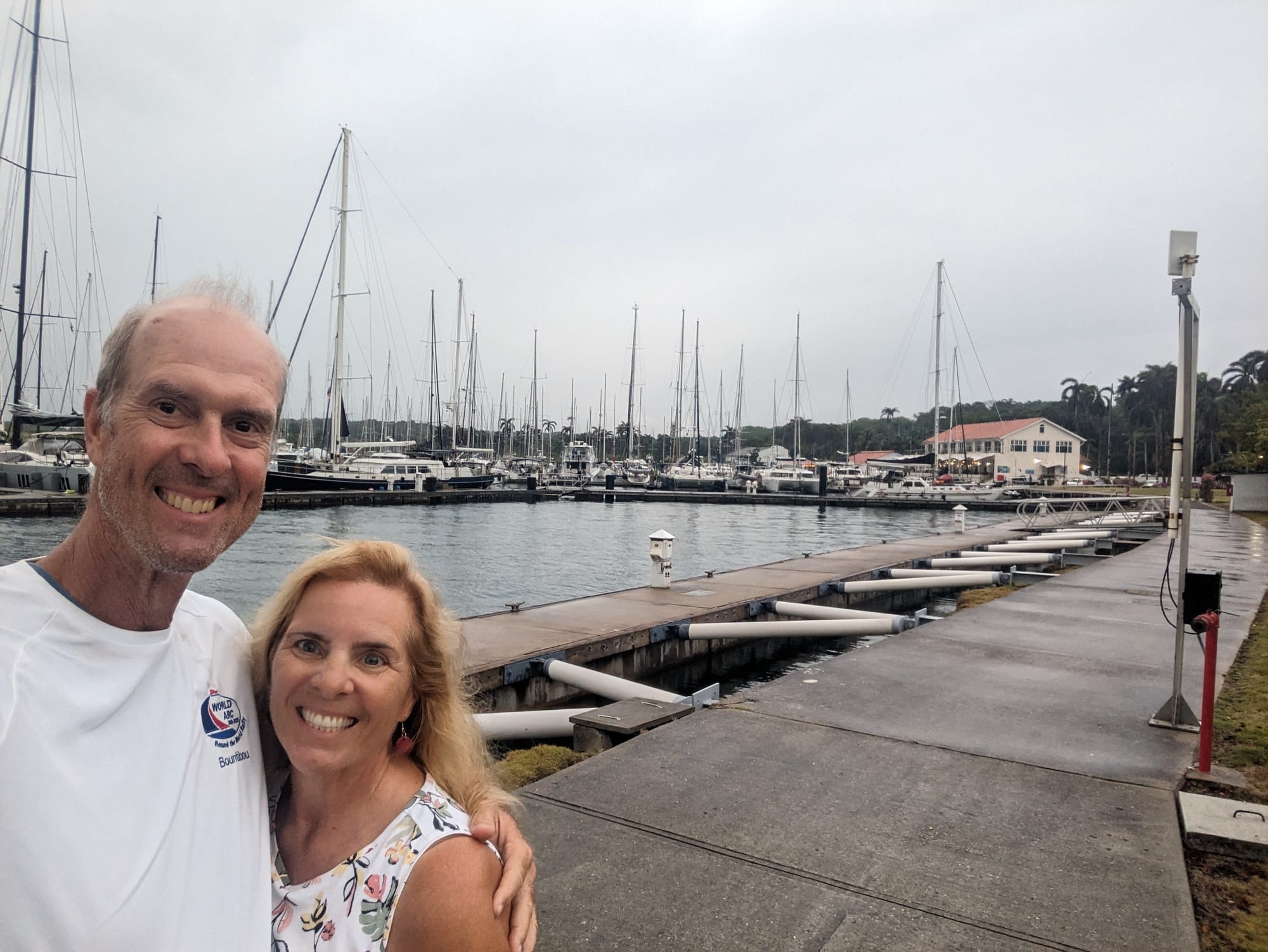
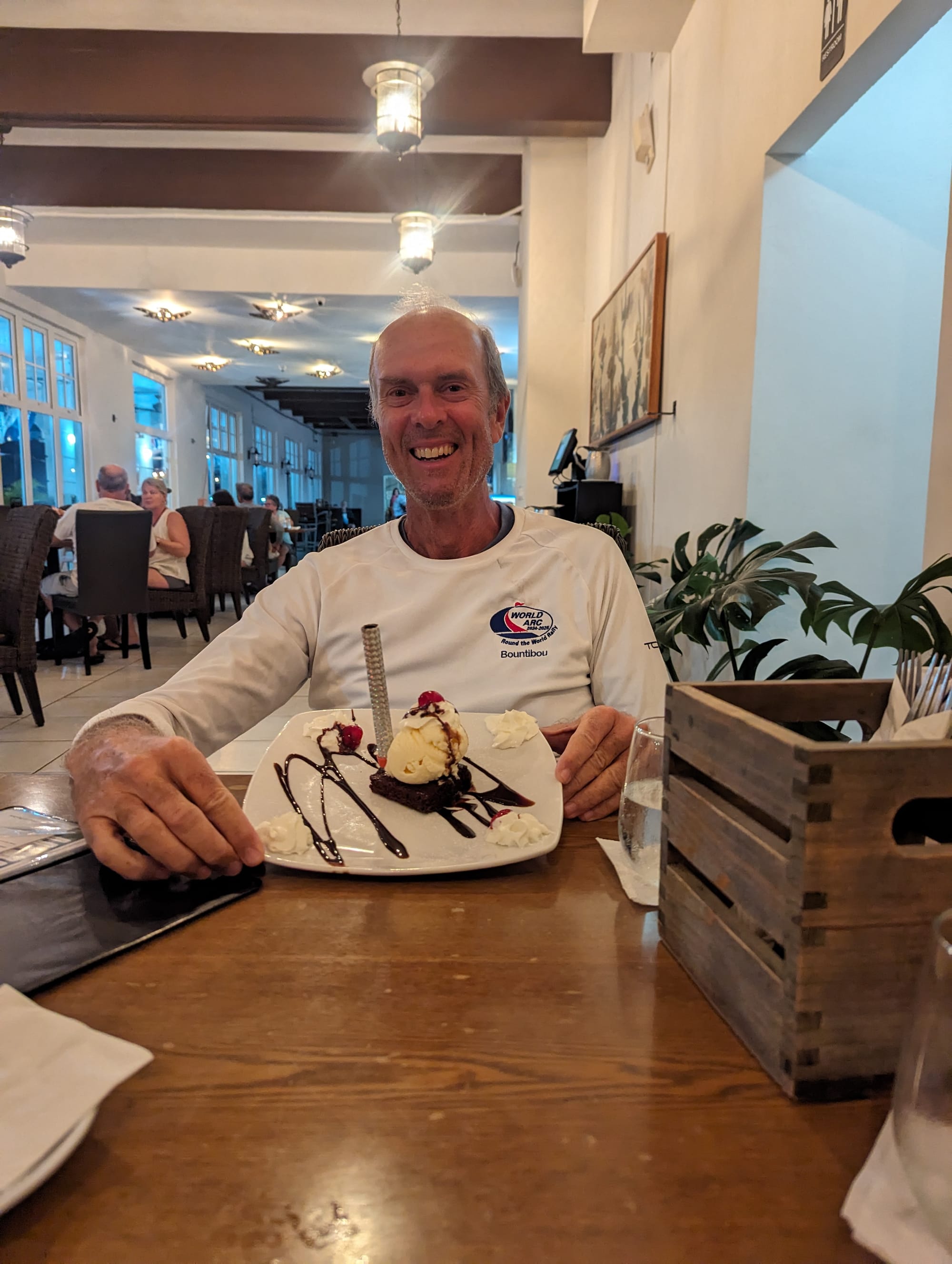
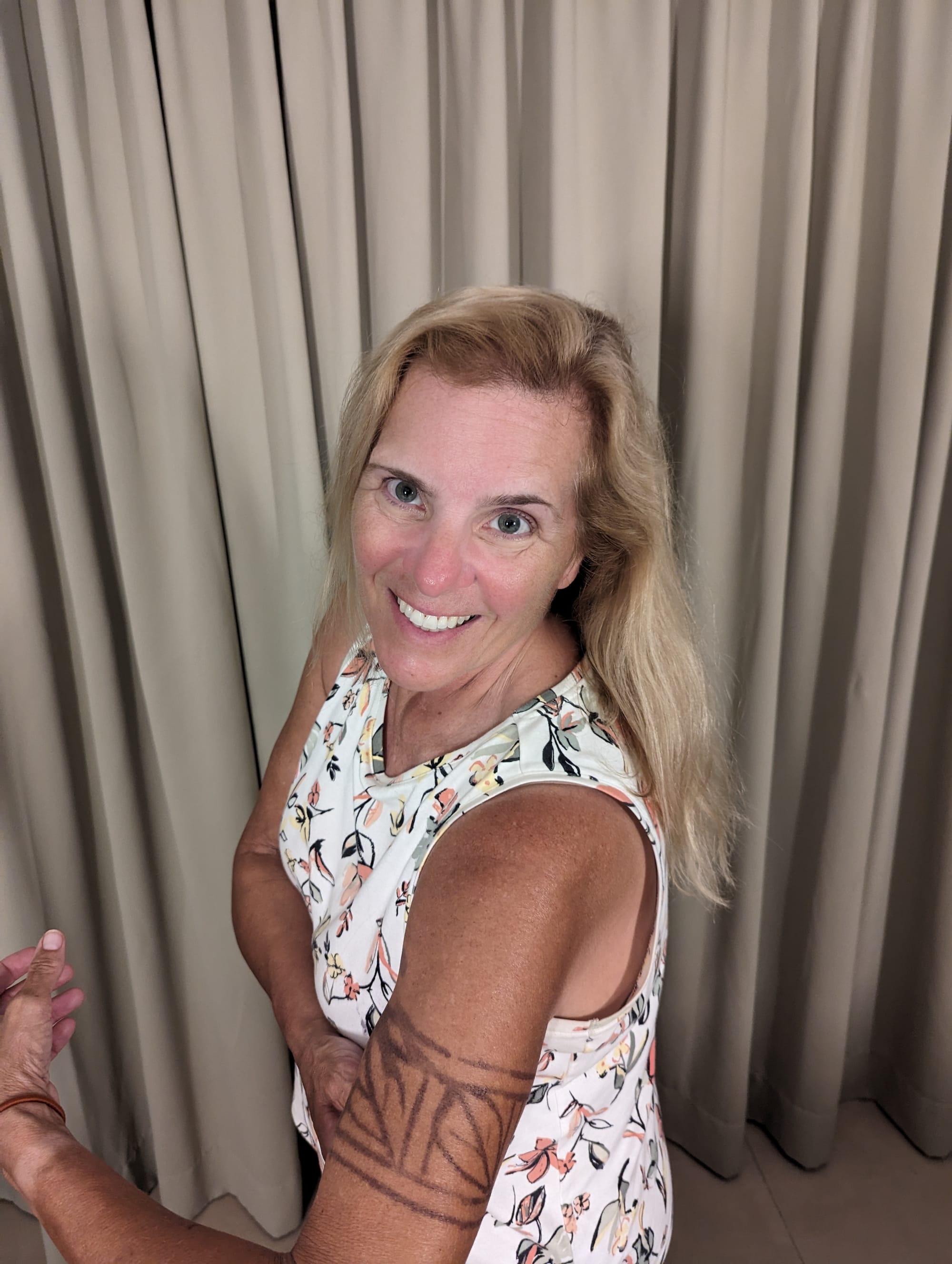
A special day to remember!
